|
Our last day in Israel. The previous 8 days had gone by so fast and it was hard to believe that it was nearly over. But we still had some exploring and sightseeing to do and we would be starting our day at the archeological site of Herodion, the palace fortress built between 23 and 15 BCE, and reputed to be the burial site of King Herod the Great. Herodion is situated in the Judaean Desert, approximately 12 kilometers south of Jerusalem, and 7 kilometers southeast of Bethlehem. It took approximately 20 minutes to drive from our hotel in Bethlehem (the Saint Gabriel) to this historical site. Herodion is built at the top of a cone shaped man-made hill that is approximately 750 metres above sea level and therefore, the tallest peak in the Judaean Desert. We arrived at the base of Herodion just before 10:00am on a gloriously sunny Saturday morning. Our driver parked our bus in the vast lot part way up the hill. We disembarked and walked through the ticket entrance and a small visitors area, then proceeded along the trail that winds its way up to the top of the hill. The wind grew in intensity as we crested the peak and found ourselves looking down into the palace ruins that appeared to be built into a crater at the top of the hill. It is said that Herod built his fortress on this man-made hill so he could see Jerusalem and the Holy Temple from his palace. The views from this summit were spectacular and totally unobstructed in every direction. A steep set of stone steps leads from the crest of the hill down into the palace. The ruins of several rooms are clearly evident in the centre of the palace as you descend the steps. Scattered around the ruins are cisterns and stone urns. Partial walls can still be seen dissecting the large open courtyard. Along one edge of the palace is an entrance that descends into a labyrinth of tunnels that leads to an exit part way down the hill. We entered the tunnels and walked through them to the exit where we emerged into bright sunshine. The tunnels run parallel to the aquaduct system that was built by Herod and which empty into a cistern. We walked around the outside of the hill about 1/3 from the top and came upon another excavation which is purported to be the tomb of King Herod. We then continued our descent to the park entrance where we boarded our bus to head back towards Bethlehem. Arriving in the Arab village of Beit-Sahur bordering Bethlehem on the southeast, we visited our next site, the Shepherds’ Fields, where it is suggested that the angels announced the birth of Jesus to the shepherds that were tending their flock. The site is marked by a Fransiscan chapel that was built in 1953 by Antonio Barluzzi and funded by Canadian benefactors. The chapel is built in the shape of a shepherd’s tent and topped by a starry dome. Next to the chapel is a large grotto that could have been used to house shepherds and their livestock in ancient times. We left the Shepherds’ fields and continued into Bethlehem where we would visit our last site in Israel - the Church of the Nativity. The Church of the Nativity is built on an ancient grotto that is traditionally believed to be the birthplace of Jesus. This grotto is the site that is the oldest continuously used place of worship in the Christian world. The Church is undergoing major renovation and has in fact seen multiple reconstructions since the original basilica was built here in 330 AD. The Church of the Nativity is one of the busiest sites in the Holy Land, especially during the Christmas holiday season. Even though we were past the holiday season (near the end of January) we still waited in line for nearly 90 minutes to pass through the Church to the entrance of the grotto beneath the altar. As we approached the entrance, we waited another 30 minutes as this was the time of day for the Armenian prayers and the entrance is closed during that time. We squeezed through the narrow entrance into the grotto and passed by the Bethlehem Star, a 14-point silver star on the marble floor of the grotto that marks the birthplace of Jesus. We then exited the grotto and entered another one that was used as a stable and the manger where the holy family purportedly spent their first night. We walked from the Church of the Nativity a few hundred yards to a market square where we had a late lunch at a small restaurant tucked into the side of a building, and ate our last falafel in Israel. After our brief but delicious lunch we boarded our bus and drove the short distance to our hotel. Since we had a late night flight back to Toronto, our tour company had arranged a late checkout for us. Kim and I had one final walk in the vicinity of our hotel before picking up our bags and getting ready for our trip back to Canada. After leaving the hotel, we drove back towards Jerusalem where we had one final group dinner at a local restaurant. The tour company had arranged for traditional dancers to perform for us as we finished our meal. We then boarded our bus for the last time and drove to the Ben Guiron Airport in Tel Aviv where our trip to Israel had begun just 9 days before.
Israel had been on our bucket list of places to visit for a long time. It is recognized around the world as the Holy Land - home to the religions of Abraham: Judaism, Christianity, Islam and Bahai. But it is more than that. It is a rich tapestry of ancient civilizations that include Persians, Greeks, Romans, Arabs, Fatimids, Turks, Crusaders and Egyptians. It is small, it is diverse and it is well worth visiting. Are you considering a trip to Israel? Reach out for expert advice and assistance with your holiday planning.
0 Comments
Our second to last day in Israel would be one of the lightest on our itinerary. We left our hotel, the St. Gabriel, in Bethlehem after a filling buffet breakfast. It took a little under half an hour to drive from the hotel to the top of the Mount of Olives. While we had been here just two days before to take in the magnificent views of the ancient city of Jerusalem and to visit the Garden of Gethsemane, today, this would be our starting point as we would be exploring the Upper Kidron Valley which separates the Mount of Olives from the Temple Mount and the ancient city. The modern Kidron Valley stretches approximately 20 miles from just north of the ancient city through the Judean Desert and ends at the Dead Sea. In biblical times, the Kidron Valley referred to the stretch in the vicinity of the ancient city of Jerusalem and is dominated on its western slope by the seemingly endless Jewish cemetery that dates back to the First and Second Temple periods (1000 BC to 70 AD). We walked down the valley beginning just north of the ancient city with the cemetery on our left and the Eastern Wall of Jerusalem on our right. With the exception of the contemporary rooftops that could be seen on the hills to the south, one could easily imagine making this same walk 2000 years ago. One of the most prominent ancient monuments lies directly between the Mount of Olives and the Eastern Wall - The Tomb of Zechariah. It is carved from a single stone and was built in the 1st century AD at the end of the Second Temple Period. We ended our walk down the Kidron Valley at Mount Zion, just south of the ancient city. On the slopes of Mount Zion is the Church of Saint Peter, initially built in 457 AD to commemorate Peter’s denial of Christ and repentance. The church was destroyed in 1010 AD by Arabs and then rebuilt by the Crusaders in 1102. The current church was rebuilt in 1932 but houses beautiful Byzantine mosaics that were excavated during the rebuild and are thought to be part of the original shrine from the 5th century. Beneath the church are a succession of caves dating back to the Second Temple period and since many believe that this site was the home of the High Priest Caiaphas, who condemned Jesus to death, the caves are also believed to be where Jesus was imprisoned before his execution. Beside Saint Peter’s Church, are the remnants of an ancient set of stone steps that descend from Mount Zion to the Garden of Gethsemane. They are reputed to be the steps that Jesus and his disciples descended on their way to the Last Supper. We finished our tour of the Kidron Valley at another major religious site on Mount Zion - King David’s Tomb. Many believe that King David's Tomb is the burial place of David, King of Israel. Formerly a mosque, it was converted into a synagogue following the establishment of the State of Israel in 1948. While we were leaving the synagogue, a small group of dancers performed in a room just outside the alcove where the tomb is located. We walked from the synagogue and entered the ancient city through the Zion Gate which leads into the Armenian Quarter of Jerusalem. The Armenian Quarter comprises the southwestern part of the old city and is home to some of the oldest surviving churches in the Jerusalem including St. Marks Chapel and Saint James Cathedral. Because of the waning number of Armenians in Jerusalem, this quarter of the old city is quietest and most peaceful. We exited the Armenian Quarter at the Jaffa Gate which leads directly into Mamilla Mall, also called Alrov Mamilla Avenue, an upscale shopping street which consists of a pedestrian promenade lined by 140 stores, restaurants, and cafes. While it has a variety of international shops such as Zara, Tommy Hilfiger, Pandora, Swarovski, The North Face, GAP, and more, we elected to walk past these stores and found a restaurant called Caffit 1987 on an adjacent street where we enjoyed a late afternoon lunch of pasta and pizza. 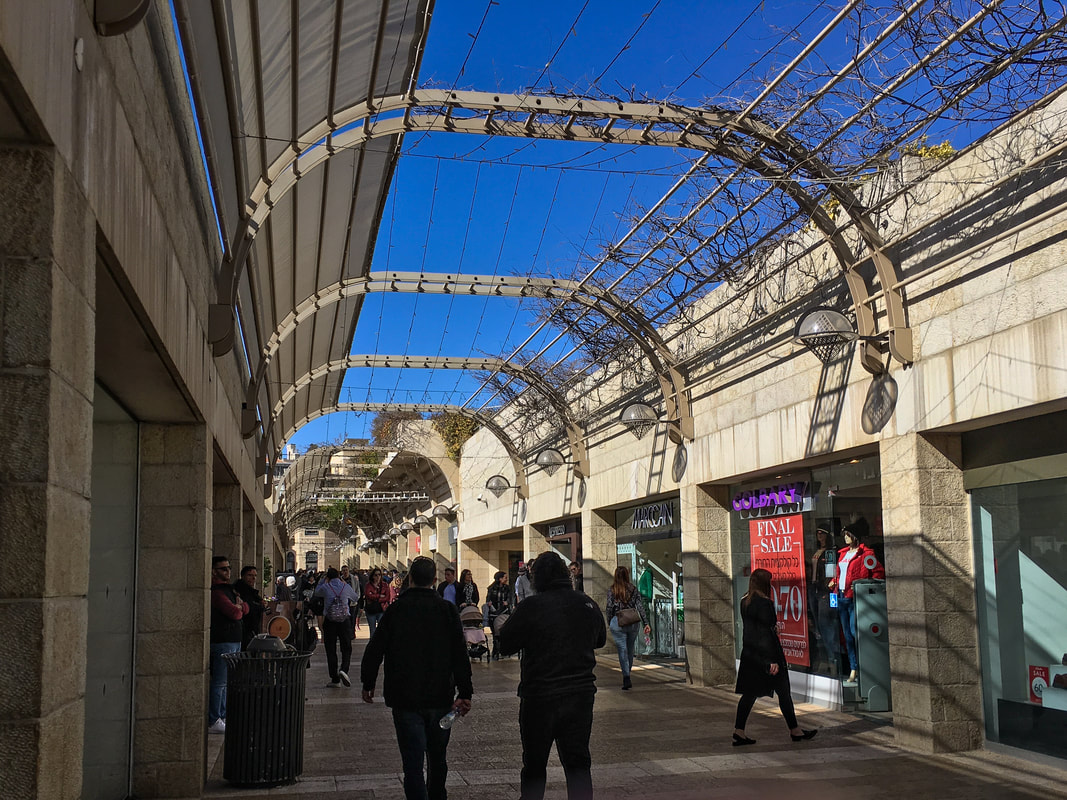 Following our lunch we walked back to the promenade outside the Jaffa Gate where we reconvened with the rest of our group to return to our hotel in Bethlehem. Once we arrived at the hotel Kim and I decided to take a walk around the area since it was such a pleasant and sunny afternoon. The narrow streets were quite busy with both cars and pedestrians. Makeshift sidewalk food stands were set up all along the streets displaying fruits, vegetables, meats and other goods. We walked for about half an hour covering a couple of blocks around our hotel before returning and getting ready for dinner. Tonight would be a relatively quiet night as we needed to pack and prepare for our last day in Israel.
Are you considering a trip to Israel? Reach out for expert advice and assistance with your holiday planning. Continue to Day 9 - click here On our 2nd day in Jerusalem, we would be spending most of our time exploring the ancient city itself. Our previous day had given us great views of the ancient city from the Mount of Olives and we had examined the huge model of Jerusalem that represented the 2nd Temple Period (586 BC to 70 AD) at the Israel Museum. Today we would be going inside the old city walls to examine first hand some of the most revered religious and historical sites in the world. It took about 20 minutes for our tour bus to make the 1.8 kilometre trek from our hotel, the Olive Tree (situated in the American Colony neighbourhood) to the entrance near the Western Wall of the old city of Jerusalem. Apparently, it takes about the same amount of time to walk that distance. There was a rather lengthy line-up to go through security, though the process was fairly smooth. Our tour host had been carrying a small Canadian flag throughout our trip in Israel to indicate where we were to meet and distinguish us from other tour groups. He had to relinquish the flag before we entered the old city as no political banners or artifacts are allowed. Once through security, we walked through a large open plaza that leads to the Western Wall. There were hundreds of people milling about the plaza, many were large families celebrating bar/bat mitzvahs at the holy site. The Western Wall is the closest point that Jews can get to the “Holy of the Holies” (more about this later) which is on the eastern side of the wall because that area is occupied by Muslims. Men and women approach the wall separately - men to the north, women to the south. Out of respect, men are required to cover their heads at the wall. Non-Jewish men are provided with cloth kippas if they want to approach the wall. We spent nearly an hour in and around the wall, mostly watching the myriad of people taking turns worshiping at the wall and then celebrating with their families in groups around the plaza. From here we walked a short distance to the Moroccan Gate in order to gain entry to the Temple Mount. While there are 11 gates in total that lead to the Temple Mount, the Moroccan Gate is the only entrance for tourists and non-Muslims. The entrance has tight security and is heavily guarded. In addition, the hours of entry for tourists and non-Muslims are quite limited. Morning entrance is from 8:30am to 11:30am and afternoon from 1:30pm to 2:30pm. We arrived here around 10:00am and passed through relatively quickly and without incident. We walked through the entrance and emerged onto a vast plaza that is bordered by 4 walls, including the Western Wall. The plaza was built during the reign of Herod the Great in order to expand the temple. The plaza is dominated by three monumental structures that date back to the 7th century (though much reconstruction has been done since): the al-Aqsa Mosque, the Dome of the Rock and the Dome of the Chain, as well as four minarets. For Muslims, the al-Asa Mosque is considered the 3rd holiest site in Islam, behind Mecca and Medina. It is said that Muhammed journeyed here from Mecca and ascended into heaven in a single night in 621. The foundation stone that the Dome of the Rock is built over is said to be the location where God created the first man, Adam, and where Abraham attempted to sacrifice his son Isaac to prove his faith. The Dome of the Chain, a small prayer house immediately adjacent to the Dome of the Rock, was originally built in 691. Because the Temple Mount has immense significance for three major world religions - Muslim, Jews and Christians - it is one of the most contested religious sites in the world. While the Temple Mount is within the Old City, which has been controlled by Israel since the Six Day War in 1967, the administration of the Temple Mount itself is under Jordanian custodianship and remains a major focal point of the Arab-Israeli conflict. While we were visiting the Temple Mount, a film crew, escorted by a large contingent of armed militia, were interviewing a distinguished looking older gentleman. It turned out that this man was one of the first Israeli soldiers who entered the holy site in 1967 during the Six Day War. After our visit to the Temple Mount, we proceeded to the Old City near the Lion’s Gate. Here we visited the Pool of Bethesda and the Church of Saint Anne which marks the beginning of the Via Dolorossa. The Via Dolorossa, “the Way of the Sorrow”, is said to be the route that Jesus took, carrying his cross from the place where Pontius Pilate sentenced him to death, to Golgotha, where he was crucified. The route winds from the Antonia Fortress west to the Church of the Holy Sepulchre, a distance of about 600 metres and is a celebrated place of Christian pilgrimage. There are many stops along the route, most marked by plaques signifying the Stations of the Cross. We eventually arrived at the Church of the Holy Sepulchre which contains, according to tradition, the two holiest sites in Christianity: the site where Jesus was crucified, and his empty tomb, where it is said he was buried and resurrected. The tomb is enclosed by a 19th-century shrine called the Aedicula. Following the Via Dolorossa walk, we made our way to the Arab market located in the Christian and Muslim Quarters of the Old City. The market is a labyrinth of alleyways lined with shops selling everything from handmade jewelry and exotic scarves to hookahs and ceramics. Kim and I found a quaint falafel shop with a few tables that allowed us to sit and eat while we watched the commotion of the market vendors bartering with the endless flow of shoppers. Having explored the Old City for most of the morning and early afternoon, we ended our tour at the Garden Tomb which is adjacent to a rocky escarpment that has been proposed by some scholars to be Golgotha. While the traditional site where the death and resurrection of Christ are believed to have occurred has been the Church of the Holy Sepulchre, this site is said to represent a more visual representation of the events described in the Gospels. The Garden Tomb is a peaceful respite from the business of the Old City. A small group of caves, believed to have been used as burial tombs dating back to the 8th century form the back wall of this serene garden. One of the caves is said to be very similar to the tomb that was owned by Joseph of Arimathea, and occupied by Jesus when he was crucified. It was late afternoon when we finished our visit of the Old City. We boarded our bus and drove about 30 minutes to Bethlehem where we would be spending our last night in Israel.
Are you considering a trip to Israel? Reach out for expert advice and assistance with your holiday planning. Continue to Day 8 - click here On our 6thday in Israel we would begin the first of 3 intensive days of exploring one of the oldest and most storied cities in the world - Jerusalem. This was in stark contrast to the previous several days where we spent much of our time covering several areas across the less populated north and eastern regions of the country. Our Jerusalem city tour started with a 20-minute bus ride from our hotel, winding our way to the top of the Mount of Olives where we were rewarded with a spectacular panoramic view of the ancient city of Jerusalem to the west. The view from the top of the Mount of Olives, overlooking the Kidron Valley is highlighted by the brilliantly golden Dome of the Rock perched atop the Temple Mount. We spent quite some time at the viewpoint near the top of the Mount of Olives enjoying the incredible vistas of the old city, the seemingly endless ancient Jewish cemetery that lies on the western slopes of the Mount of Olives and the Kidron Valley that lies between the Mount of Olives and the Temple Mount. After taking countless photos and video from this vantage point we gathered together and followed the long winding path known as the Palm Sunday walk which leads from the top of the Mount of Olives past Dominus Flevit, a Fransciscan Church, then on to the Garden of Gethsemane, where, according to the New Testament, Jesus would frequently meet with his disciples and where he would eventually be betrayed by Judas. We walked around enjoying the peace and tranquility of Gethsemane until we were summoned by our tour guide to head back to the bus. Since we would be exploring more of the Kidron Valley and the ancient city of Jerusalem over the next two days, we would spend the rest of this day at 2 of Israel’s most renowned museums. The first we visited was the Israel Museum, one of the world’s leading art and archeological museums. This modern museum highlights the Shrine of the Book, which houses the Dead Sea Scrolls, the oldest biblical manuscripts in the world, as well as rare early medieval biblical manuscripts. Adjacent to the Shrine is the Model of Jerusalem in the Second Temple Period, which reconstructs the topography and architectural character of the city as it was prior to its destruction by the Romans in 66 CE, and provides historical context to the Shrine’s presentation of the Dead Sea Scrolls. Following our visit to the Israel Museum we stopped for a quick lunch before proceeding to our next stop - the Holocaust Remembrance Centre, Yad Vashem. The Center has a large collection of original Holocaust-era documentation provided in English including letters and diaries written by Jews during the Holocaust, numerous photographs and original documents. The Holocaust Resource Center serves as a repository for the collection of the testimonies of Holocaust survivors that have been collected at Yad Vashem over the years, as well as excerpts from memoirs written by survivors after the war. We spent nearly two hours wandering through the museum trying to comprehend the unimaginable horrors that were represented in the artifacts of the museum and that took place just a few decades ago. The visit to Yad Vashem was a sobering experience, one that should not be missed on a trip to Jerusalem as it marks an historic and significant milestone in the history of humanity. As it was late afternoon when we finished our museum tour, we bussed back to the hotel in downtown Jerusalem. Kim and I changed from our walking clothes and into casual evening wear. We had decided to visit the famous Mahane Yehuda Market, often referred to as "The Shuk” since we could get to it via the tram that was only a couple of hundred metres from our hotel. The Shuk is a massive open-air and partially covered market that houses over 250 vendors. It is vibrant, colourful and lively - all the things a market should be. Fresh fruits and vegetables; baked goods; fish, meat and cheeses; nuts, seeds, and spices; wines and liquors; clothing and shoes; and housewares, textiles, and Judaica are available throughout the market. Vendors are calling out, vying for your attention as you walk by their booths. We stopped by a dried fruit stand and bought some exotic dried fruits which we were told made a wonderful and healing tea. We had made a reservation at Machneyuda, a Middle Eastern restaurant just a few blocks from the market and we eventually ended up at the restaurant just a few minutes before our reservation. We were led to our table near the back of the narrow restaurant by a friendly hostess. As we waited for our server to arrive at our table, the kitchen staff emerged playing musical instruments and singing and dancing around the tables. This set the mood for the rest of the evening and we enjoyed a fabulous meal including lamb, pasta, kurdish pastry and Bavarian toffee cream. We emerged from the restaurant feeling full, yet elated but we had one more stop to make before going back to our hotel. Prior to our trip to Israel, we had read about a unique and intriguing bar in the 1920’s speakeasy style called Gatsbys. We had looked up the address before coming to dinner and since it was within walking distance of the restaurant we decided to try and find it. This proved much more difficult than we had first thought. We walked for about 30 minutes to the area where the bar was located. When we were in the vicinity, we asked several passersby who were local residents if they could direct us to it. No one we asked had heard of it. At the address where the bar was supposed to be was an office building with a restaurant/cafe attached to it. We asked the manager of the restaurant if he could tell us where Gatsby’s was, but he had not heard of it either. One of the staff suggested that we walk down the corridor between restaurant and the office building as they had seen people going there earlier. We walked down the corridor which ended at a solid wooden door with a large “G” in the centre of the door. We opened the door and walked into a small vestibule that was lined with bookshelves. A woman sat behind a wooden desk at one side of the vestibule. We told her we were looking for Gatsby’s and she said “You found it!” and proceeded to roll back one of the bookshelves and then led us into a wonderful, lively little bar at the back. We ordered some pretty fancy drinks and enjoyed the atmosphere. What a way to end a great day! Continue to Day 7 - click here Are you considering a trip to Israel? Reach out for expert advice and assistance with your holiday planning.
After overnighting in the Oasis Hotel in Jericho, the oldest city in the world, we awoke to another spectacularly sunny day in the Judean Desert. Just after 9:00am, we boarded our now very familiar tour bus and drove the short 8 kilometres eastward to our first stop of the day - Qasr el Yahud, the official name of a baptismal site on the West Bank of the Jordan River. The drive from the main highway to the site is a couple of kilometres and passes several military lookouts. Sand dunes stretch for miles on either side of the road. Protective security fences line the road from the highway all the way to the baptismal site. Yellow signs are posted every few hundred yards along the fences warning visitors that the lands on the other side of the fences may still contain buried anti-tank mines left over from the war of 1967. De-mining is an ongoing exercise in this area with 900 of the approximately 6500 mines having been detonated to allow safe passage to the site which sees approximately 400,000 visitors per year. Qasr el Yahud is actually the western part of the baptismal site of Jesus and is accessible from the west bank of the Jordan River which is administered by the Isreali Ministry of Tourism. The east bank of the Jordan, a stone’s throw away, is the official site designated as the Baptism Site “Bethany Beyond the Jordan”. This site was designated an UNESCO World Heritage Site in 2015. We spent just over an hour walking along the boardwalk that extends for several hundred yards along the banks of the Jordan River. The water level has dropped significantly over the years and as a result has a murky, brownish hew. The banks on either side of Jordan at this spot are covered in lush vegetation - grasses, brush and trees. Dozens of visitors were lined up along the boardwalk, many coming to be baptized with the waters drawn from the location where John the Baptist performed his work. We were fortunate enough to be able to witness one of our group member's being baptized which was a lovely ceremony. We left Qasr el Yahud and headed south toward the Dead Sea, approximately 15 kilometres away, on our way to Qumran - the place where the Dead Sea Scrolls were discovered. On our way, we made a brief mid-morning stop at a small, touristy rest area that had a few shops and restrooms. At one end of the parking there were a half dozen camels kneeling on the pavement, casually chewing their cud. As our bus unloaded, a group of Palestinians, dressed in traditional garb, approached us and offered rides on the waiting camels. Most of our group obliged and the $5 USD for a quick ride around the parking lot. After leaving the rest stop, we continued on route to Qumran which took about another 15 minutes. We arrived at the entrance to the archeological site - a plateau set in cliffs of the desert mountains just east of the Dead Sea. We disembarked from the bus and entered the park, walking along raised boardwalks that overlooked the excavated ruins. From 1947 to 1956 more than 900 parchment and papyrus scrolls were discovered in the caves of Qumran. The site is the remnant of an ancient Jewish community that many scholars believe belonged to a Hebrew sect. From the boardwalk we were able to view the several caves that had kept the Dead Sea Scrolls hidden for nearly 2000 years. We continued walking along the boardwalk and viewed remains of cisterns, Jewish baths and the clay vessels that had housed the scrolls. At the highest point along the boardwalk, we were rewarded with magnificent views of the Jordan Valley below and the Dead Sea in the distance. As the morning turned to afternoon, we finished our tour of the Qumran area and re-boarded our bus for the short ride to the Dead Sea. Our bus descended from the desert mountains into the Jordan Valley and followed the road down to the Dead Sea which is purported to be the lowest spot in the world - 400 metres below sea level. Between the parking lot at the entrance, and the sea we passed through a small outdoor mall/market. There were several stands selling sundry tourist items like sunglasses, sunscreen, towels and beachwear. Others offered healing facial masks and oils extracted from the Dead Sea mud. We found an outdoor bistro where a few of us had a pizza lunch before heading down to the water’s edge. After finishing up our lunch, we used the changerooms near the bistro to change into our swimwear and walked down the pathway to the beach which was about 250 meters away. Several dozen people were romping in the shallow waters near the shore, many covered from head to toe in the thick, black Dead Sea mud. Apparently, the mud has beneficial healing properties and is especially good for the skin. Not wanting to miss out, Kim and I slathered the thick goop onto each other and entered the warm, salty waters of the Dead Sea. The first thing that struck me as I waded into the water was that I absolutely could not sink. This phenomenon is because the Dead Sea is hypersaline, consisting of 33.7% salt making it one of the saltiest bodies of water in the world. Once I got past waist deep it became difficult to walk because my body was being lifted to the surface of the water. It was an eerie feeling that took a bit to get used to. After floating in the water for 20 minutes or so, I waded back to shore and washed off the rest of the black mud that had dried to my body. To my surprise, every inch of my skin that had been covered in the mud felt silky smooth to the touch. I was quite impressed. We spent a bit of time lounging in the sunshine on the beach before returning to the changerooms to get ready for our bus ride to Jerusalem. We drove through the Judean desert and marveled at the miles and miles of date palm tree plantations along the road to Jerusalem. Before heading to the hotel, we stopped at a tourist shop in Bethlehem, the Good Shepherd, where we purchased some carvings made by hand from Olive wood. We arrived at our hotel in middle of the bustling city of Jerusalem just after 6:00pm. After checking in, we enjoyed a Chinese buffet dinner with the rest of our group and then retired to our room for the evening. We had spent the last few days traveling to the more rural and serene areas of Israel - the Sea of Galilee, the Jordan River and the Dead Sea. The next few days would be spent in and around Jerusalem, one of the oldest cities in the world and home to 3 of the world’s major religions.
Are you considering a trip to Israel? Reach out for expert advice and assistance with your holiday planning. Continue to Day 6 - click here Our 4th day in Israel started at the Sea of Galilee Resort as we packed our bags, had breakfast then met with the rest of our group in the lobby for our 9:00am departure to Nazareth. The 45-minute drive to the west would take us through the valleys of Lower Galilee which are known for their rich and fertile soil. We arrived in Nazareth, recognized as the Arab capital of Israel, just before 10:00am. Nazareth has a population of about 80,000 people, with a predominately Arab population of around 69% while nearly 25% are Christian. Because Nazareth is purportedly the childhood home of Jesus, it is a popular site for Christian pilgrimages. Among the most visited sites are the Church of the Annunciation and the Church of Saint Joseph. Our first stop was at the Church of the Annunciation, built on top of what the Catholic Church believes to be the home of the Virgin Mary. This is where the angel Gabriel first appeared to Mary and announced that she would conceive and give birth to the Son of God. The current church was built in 1969 and sits atop of an earlier Byzantine church which itself was built over a Crusader-era church. Beneath the Church is a grotto where the Annunciation is supposed to have taken place. A short distance from the Church of the Annunciation is another well visited Christian site - the Church of Saint Joseph. This Church is built on top of the ruins of the house where Joseph lived. It is here where Jesus was baptized and where Mary and Jesus lived when the holy family returned from Egypt. After our morning tour of Nazareth, we boarded our bus and drove southeast toward the Jordan River and after about 45 minutes, arrived at the town of Beit She’an. The modern town of Beit She’an has a population of about 18,000 people. It has historical significance in biblical times as the place where King Saul and his 3 sons were hung on its walls during the battle of the Israelites against the Philistines. In Roman times it was the main city in the Decapolis, a group of ten cities on the Eastern frontier of the Roman Empire in Israel. The ruins of this ancient Roman city are now preserved in a national park in Beit She’an. We spent several hours walking through this impressive site which, while not as expansive or intact as Pompei, still provides a sense of the culture, architecture and engineering accomplishments of ancient Roman civilization. Painstaking excavation is still taking place, mostly by foreign students, and new discoveries are always on the horizon. We finished up our exploration of Beit She’an and walked out of the site to a street side cafe where we enjoyed schnitzel on a pita. Following our lunch, we boarded our bus and headed south through the fertile lands of the Jordan Valley travelling through miles and miles of date palm plantations that border the Jordan River. As we crossed from Israel into the West Bank enroute to Jericho, we passed through a military check point. We continued southward along the Jordan River until a few kilometers before Jericho where we stopped at the foot of mountain. The mountain face is a precipice and near its summit on a protruding ledge sits a magnificent Greek Orthodox monastery overlooking the city of Jericho and the Jordan Valley. This mountain is believed to be where Satan tempted Jesus during his 40 day fast and is thus referred to as the Mount of Temptation. We continued the short distance from the Mount to Jericho, on the way stopping to view the oldest sycamore tree in the world. Some believe that this is the biblical sycamore tree upon which the tax collector, Zachaeus, climbed in order to see Jesus as he entered the city of Jericho. It was approaching 4:00pm when we arrived at Jericho, reputed to be the oldest walled city in the world. Archeologists have discovered more than 20 different settlements here with some artifacts dating to 11,000 BC. This is a Palestinian city with a population of about 20,000. As we drove through the city we passed a large Palestinian refugee camp which was walled and topped with razor wire. It turned out our hotel, the Oasis, was across the main street from the camp. We passed through a gated security check as we entered the hotel property, which is completely surrounded by a high wall and protective fencing. The hotel decor is a bit dated, but is quite an impressive structure, with a large outdoor pool, expansive gardens and palm trees throughout the grounds. The property exudes an opulence that seems surreal and out of place given the simplicity and conditions of the surrounding area. We checked into our room and were greeted by the smell of stale cigarette smoke. It turns out that there were no non-smoking rooms in the hotel. Fortunately, we were only staying for one night and slept with the window open. While there were some challenges with the hotel including intermittent wifi and the power going out several times, we had a restful sleep and were looking forward to our next day of exploring. Continue to Day 5 - click here Are you considering a trip to Israel? Reach out for expert advice and assistance with your holiday planning.
Our 3rd day in Israel began with an inspiring sunrise over the Sea of Galilee that we enjoyed from our hotel balcony. After a fulsome buffet breakfast in the newly finished Sea of Galilee Hotel Resort we boarded our bus that would take us to the area where many of the most renowned Christian stories originated. While our first 2 days in Israel focused on Roman ruins and architecture, Crusader castles and Muslim mosques, today’s focus would be almost exclusively on the locations of the early Christian teachings of Jesus. And we were prepared for a very full day. The drive from the hotel to our first stop, the Church of the Beatitudes, was only about 20 minutes and would have been shorter if the long winding entranceway from the hotel to the main road had been finished. In its current state, the entranceway was little more than a narrow, dirt trail which taxed our driver’s skill to maneuver the tour bus around some of the sharper turns. We eventually found our way to the main road, a modern highway that follows the coast of the Sea of Galilee through rolling hills and valleys. It turns out that the Sea of Galilee is not really a sea at all, but rather a fresh water lake (also known as Lake Tiberius) that is approximately 13 miles long from north to south and 7 miles wide from east to west. It is tucked away in the north east corner of Israel near the borders of Lebanon, Syria, and Jordan. Its’ eastern shore forms the western border of the Golan Heights. Our first stop was at the Church of the Beatitudes, a Roman Catholic church built atop a hill that overlooks the north eastern shore of the Sea of Galilee. This area is said to be the location where Jesus delivered the Sermon on the Mount. The church, built in the 1930’s, is surrounded by beautiful gardens and mature trees enhancing the feeling of peace and tranquility that seems to fill the entire area. We wandered around the gardens, taking in the natural beauty of this space and enjoying the bright sunshine filtering through the majestic trees. Following our meditative repose at the Church of the Beatitudes, we re-boarded our bus and drove a half dozen kilometers to our next stop - a kibbutz run fruit winery that produces a surprisingly large selection of wines and liquors which are only sold at their location. We sampled several of their offerings including pomegranate and passionfruit wine as well as a decadent dark chocolate liqueur. Proceeds from the sale of their products are shared with the whole community. Everyone in the community receives the same salary regardless of the kind of work that they perform. Work on the farm is split and all of the food is shared. In order to join the community, one needs to live in the kibbutz for a minimum of 3 years before making the final commitment. All children in the community are raised as siblings, so they marry from outside the community. This was a fascinating insight into a way of life that is simple and collaborative. We purchased a couple of bottles of wine as we left the winery and then headed back towards the Sea of Galilee where we would stop at the Church of the Primacy. This is only a short distance from our earlier stop at the Church of the Beatitudes, but it sits right on the shoreline of the Sea of Galilee. This is purportedly the location where Jesus, after the resurrection, re-instated Peter as chief among the apostles and where he fed the apostles a breakfast of bread and fish. A limestone rock, believed to be the “Mensa Christi (table of Christ) is enshrined inside the church. The church looks out onto the lake where the miracle of Jesus walking on water was also said to have taken place. Like the gardens around the Church of Beatitudes, the whole area surrounding the Church of the Primacy is serene and tranquil. After leaving the Church of the Primacy we drove another short distance to our final stop along the northern shores of the Sea of Galilee - the ancient town of Capernaum. According to some Gospels, Capernaum is where Jesus ministered after leaving Nazareth. Some of the apostles were believed to be from the towns and villages around Capernaum. The ruins of the synagogue where Jesus is said to have taught his followers is also located in Capernaum. A modern day memorial has been built on top of the ruins of the original structure of St. Peter’s house. We left Capernaum aboard our bus and headed south along the western shores of the Sea of Galilee for about 20 minutes until we reached the town of Tiberius where we stopped for lunch. The restaurant, called Hermitage Oriental, is situated on a promenade on the shores of the Sea of Galilee. Almost everyone in our group ordered the house special, St. Peter’s fish. It was available either filleted or whole. While many in our group chose the whole fish, Kim and I enjoyed the fillet without the head and tail. After a hearty lunch we drove to the town of Magdala, very close to where our hotel was located, and visited the ruins of an ancient city dating back to 66 BC. The ruins were discovered by accident in 2006 when the local convent was building a hotel and the construction workers unearthed some artifacts. Building was halted and the area surrounding the hotel became an archaeological site. The hotel remains unfinished and the excavation site has grown. The original town is said to have been the home town of Mary of Magdala (Mary Magdalene). Finishing up our visit to the ruins of Magdala, we carried on to a museum a short distance away, on the shores of the Sea of Galilee. The museum is significant because it houses the wreck of a 2000 year old wooden boat that was found in the waters nearby. We then walked down to a long pier at the water’s edge and boarded a relatively more modern wooden boat for a sunset sail on the Sea of Galilee. As we boarded the large wooden craft, a large flag of Canada was unfurled and hoisted on the mast. The Canadian National Anthem was played on the ships speakers as we were welcomed aboard. We were entertained by a very talented crew that performed traditional song and dance as we casually sailed past some of the places we had visited throughout the day. The sunset was surreal as we glided across the relative calm of the Sea of Galilee, the birthplace of one of the world’s most important religions. Continue to Day 4 - click here Are you considering a trip to Israel? Reach out for expert advice and assistance with your holiday planning.
Our second day in Israel started with a buffet breakfast at the Grand Beach Hotel in Tel Aviv. After breakfast we joined the rest of our group in the hotel lobby to board the tour bus for our journey northward along the Mediterranean coast. The bus pulled away from the hotel and turned north onto the main coastal road through Tel Aviv. We travelled approximately 20 minutes through the city before reaching the outskirts where it would take us another half hour before our first stop in Caesarea. As we travelled along the coast, our guide, provided some cultural backdrop about Israel and Judaism. One of the first things he shared was the strict observance of halakha (Jewish religious law) by conservative and Orthodox Jews. Observing Halakha is especially significant during the Sabbath (sunset Friday to just after sunset Saturday). We noticed this at our hotel in Tel Aviv as we had arrived on Friday afternoon. One of the hotel elevators was designated “Sabbath”. We had been advised not to use this elevator as it stops at all floors during the Sabbath. The reason for this is that the use of electricity is forbidden by Jews on the Sabbath. By entering the specially designated elevator, there is no need to press any buttons (which generates the flow of electricity) as the elevator is programmed to stop at every floor both while ascending and descending. Religious Jews also tend to live near Synagogues in order to avoid driving vehicles during the Sabbath and since lighting a stove is also restricted, their Sabbath meals are eaten cold. Our mid-morning arrival at Caesarea was washed in sunshine and bright skies. We exited the bus in the parking lot just outside the entrance to Caesarea National Park which contain the ruins of the ancient Roman city. Caesarea was built along the seashore as a major port between 25 and 13 BCE by King Herod the Great. While it was initially set up as the administrative centre for Judea Province of the Roman Empire it was subsequently conquered and ruled by the Byzantine Empire from the 4th century to 7th century. In the 7th century, it was the last city in the Holy Land to fall to the conquering Arabs who ruled it until the arrival of the Crusaders at the beginning of the 12th century. Caesarea regained some of its former greatness under the Crusaders until it was eventually conquered again by the Arab Mamluk Sultan Baybars who attacked the city in 1265. Fearing that the Crusaders would return, the Mamluk’s razed Caesarea to the ground and abandoned the city. Despite (or maybe because of) the many conquests, there remains a wealth of archeological ruins in the National Park. Of significance is the large Roman Amphitheatre and Hippodrome which cover a large area along the coastline. Between the Amphitheatre and the shoreline are the ruins of King Herod’s Palace - the upper palace for public gatherings and the lower palace for private engagements. This area also includes the ruins of a private pool which stretches out into the Mediterranean. King Herod’s Caesarea is also the site where Peter baptized the Roman Centurion Cornelius, who became the first non-Jew to become a Christian. Other visible ruins from the Roman period include baths and an aquaduct. Walking north along the shoreline and past the Hippodrome some of walls and structures from the Byzantine, Muslim and Crusader periods have also been excavated. We ended our visit to Caesarea at a juice stand at the exit to the ruins. A vendor was squeezing fresh pomegranates and oranges into cool, refreshing juices and we couldn’t resist the bright red nectar of the pomegranate. Our next stop along the north western coast of Israel was at Haifa, Israel’s 3rd largest city with a population of approximately 300,000. Haifa is a major port in Israel and is bordered by the Mediterranean Sea on one side and Mount Carmel on the other. We began our tour of Haifa with a visit to the Stella Maris Monastery and Church, located on the side of Mount Carmel and reportedly situated above the grotto that served as the home of the prophet Elijah. The Monastery serves as the worldwide centre of Carmelite spirituality. There are several religions represented in Haifa including Judaism, Christian and Muslim along with one of the world’s newest religions, Bah’ai. Bah’ai’s believe in the oneness of God, the unity of humanity and the essential harmony of religion. It is a monotheistic religion that sees each of the major religions and their prophets (Buddha, Jesus, and Muhammad being the most recent in the period before the Báb and Bahá'u'lláh) as an orderly and progressive revelation of the one true God. The prominence of the Bah’ai religion in the area around Haifa and Acco is manifested in one of the most visited sites in Israel - the Bah’ai Gardens, a World UNESCO Heritage site on Mount Carmel in Haifa. We were awed by the beauty and symmetry of the terraced gardens and the incredible vistas from the top of Mount Carmel over the port of Haifa and the Mediterranean Sea beyond. Just another 20 minutes up the coast we arrived at Acre - known locally as Akko. While only comprising a population of around 50,000 it is purported to be the oldest continuously inhabited settlement on Earth. It is home to Jews, Muslims, Christians and Bah’ai’s (who regard it as the holiest city of their faith). Much like Caesarea, Akko underwent several conquests dating back to the Bronze Age including by Persians, Romans, Byzantines, Muslims, Crusaders and Mamluk’s. The old city of Akko is designated a UNESCO World Heritage Site and its main building is an Ottoman Fortress built on the foundation of a Knight’s Hospitaller citadel. We walked through the secret tunnels of the original Crusader fortress that run under the city out to the sea. As we exited the fortress we arrived in a square that led to another market on the streets of Akko. We found a spot for a late lunch and feasted on falafel and shwarma then walked around the market where we spotted a street vendor selling an interesting popular Middle Eastern desert called malabi. It is a creamy, milk-based pudding that is flavoured with rosewater. Though quite tasty, the texture was very different to what we were expecting. Since Akko was our last scheduled tour for the day, we boarded the tour bus for the one hour drive east towards the Sea of Galilee Hotel in Magdil where we would be spending the next 2 nights. We arrived just after sundown and checked in to this brand new hotel just off the shores of the Sea of Galilee. The hotel had only been open a couple of weeks and while it was pristine and modern, it wasn’t quite fully finished. It was comfortable though, and featured a modern bar and lounge just off the main lobby. Our room had a magnificent view over the hotel pool and beyond to the Sea of Galilee which offered a sensational sunrise that would summon the beginning of our 3rd day in Israel. Continue to Day 3 - click here Are you considering a trip to Israel? Contact us for expert advice and assistance for your Israel trip planning.
We began our journey to Israel on a cold January day from Toronto’s Pearson International Airport where we met up with our group of fellow travel agents for our direct flight to Ben Gurion Airport in Tel Aviv. Our overnight El Al flight was smooth and uneventful and we landed at Ben Gurion in the late morning under bright and sunny skies. Our small group of 20 travellers gathered in the baggage area, where we cleared immigration and filled out our visas. We were met by our tour guide who introduced himself and then led us out of the terminal to our waiting tour bus. On our 30 minute ride from the airport to the ancient port of Jaffa, we learned that the population of Israel is roughly 8.5 million people comprising of approximately 82% Jews, 17% Muslim and 1% Christian. The nearby city of Jerusalem has a population of 900,000 and Tel Aviv has approximately 450,000. Jaffa, our first stop in Israel, is the Holy Land’s most ancient city. Jaffa is tied to several significant biblical stories including Jonah and Solomon. Jonah began his sea voyage from the port of Jaffa before being swallowed by a whale. Jaffa was also the entry point for the cedars brought in from Lebanon that were used in the construction of the Temple of Solomon. Our bus navigated through the old, narrow streets of this small but bustling town before dropping us off in the square a few blocks from the Mediterranean Sea. We were given some free time to have lunch and wander around the town square. Kim and I found a street side falafel house that had a few tables tucked inside. We each ordered a falafel which were large, fresh pita stuffed full and doused in tahini. It was very tasty and would be the first of many falafel that we would enjoy on this trip. After our quick lunch, we walked down the street to an intersection that led to several smaller streets which comprised of a large antique market. We meandered slowly through this market which at times resembled a large garage sale with a variety of odd and quirky items spilling out onto the sidewalk. After walking down several of these side streets we eventually made our way back to the town square in front of the tower in the boulevard to start our walking tour of the old port. Our guide led us back towards the market and along the main street that runs parallel to the sea coast. We walked uphill along the street past the port mosque and then towards Saint Peter’s Church and the monastery where Napoleon stayed in 1799. Saint Peter’s Church is built adjacent to the house of Simon the Tanner with whom Peter is said to have stayed after raising a Christian woman from the dead. It is also on the roof of Simon’s house that Peter had his vision of the sheet filled with both “clean” and “unclean” animals - believed to be the end of the separation between believing Jews and god-fearing Gentiles which led to the spread of Christianity. On the way back from Saint Peter’s to the square we walked along the port promenade that separates the Mediterranean Sea from the town proper. We boarded our bus and drove the short distance along the coast from Jaffa to Tel Aviv. Our hotel, the Grand Beach, was located across the main street that runs along the coast. After checking into our room shortly after 4:00pm and dropping off our bags, we decided to go for a walk before dinner to catch the sunset. Our walk took us along the main street for about 1 kilometer before we crossed over onto a side street that led to a boardwalk which ran the length of the beach. We walked at a leisurely pace, as joggers and skateboarders passed us by. We came across a beachside restaurant which had chairs and tables set on the sand overlooking the sea. We each ordered a glass of wine and watched while sailboats and surfers danced across the waves. After relaxing over our wine, we headed back to the hotel as the sun began its slow glide towards the western horizon. At the hotel, we joined the rest of our group in one of the main meeting rooms where we met Saliba, the owner of the tour company, who were hosting us on our Israel pilgrimage. After our meeting with Saliba, we capped off our first day in Israel with a bountiful buffet dinner in the hotel restaurant.
Continue to Day 2 - click here |
Sharing Our Travel DreamsSharing our personal experiences onboard and on the road, along with tips and insight for creating memorable vacations. Archives
March 2021
Categories
All
|









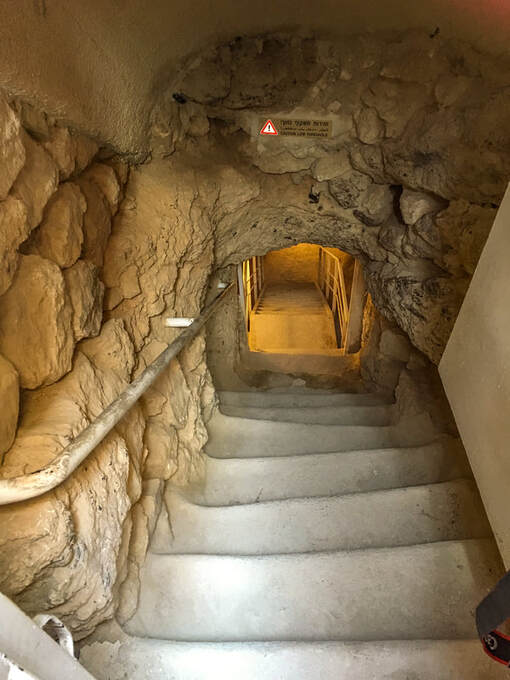












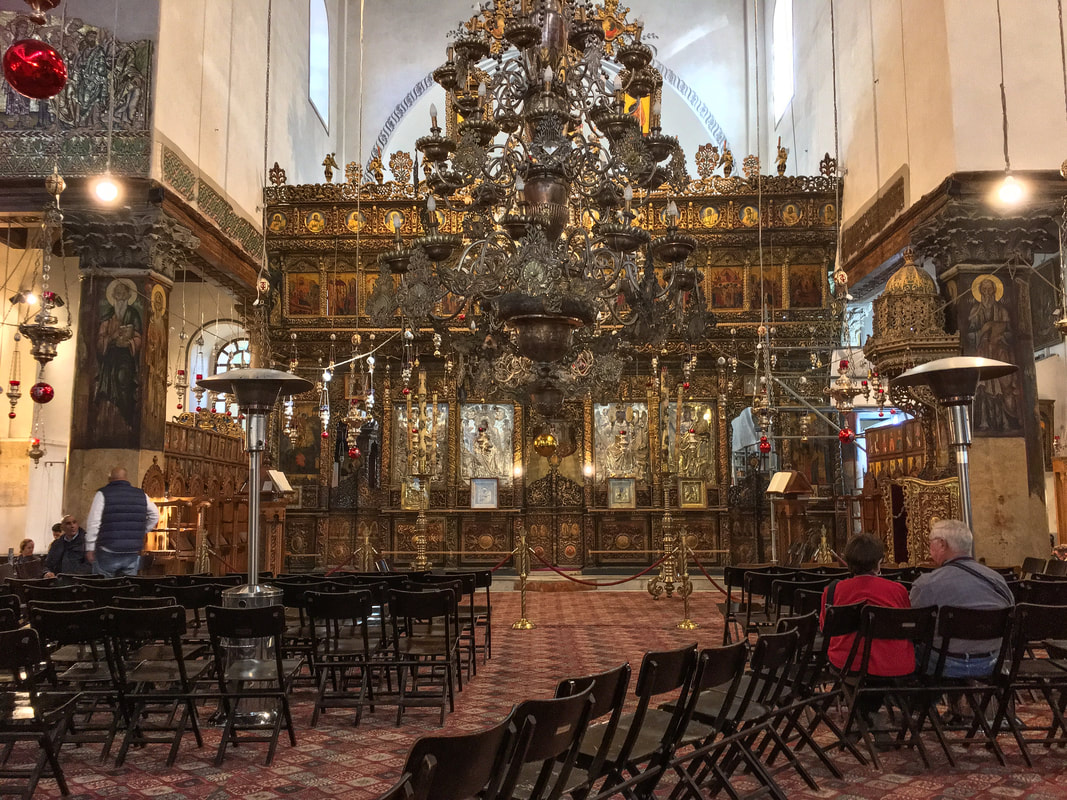



















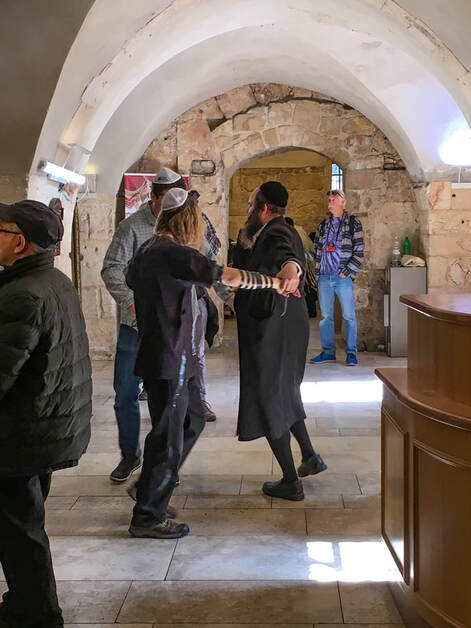




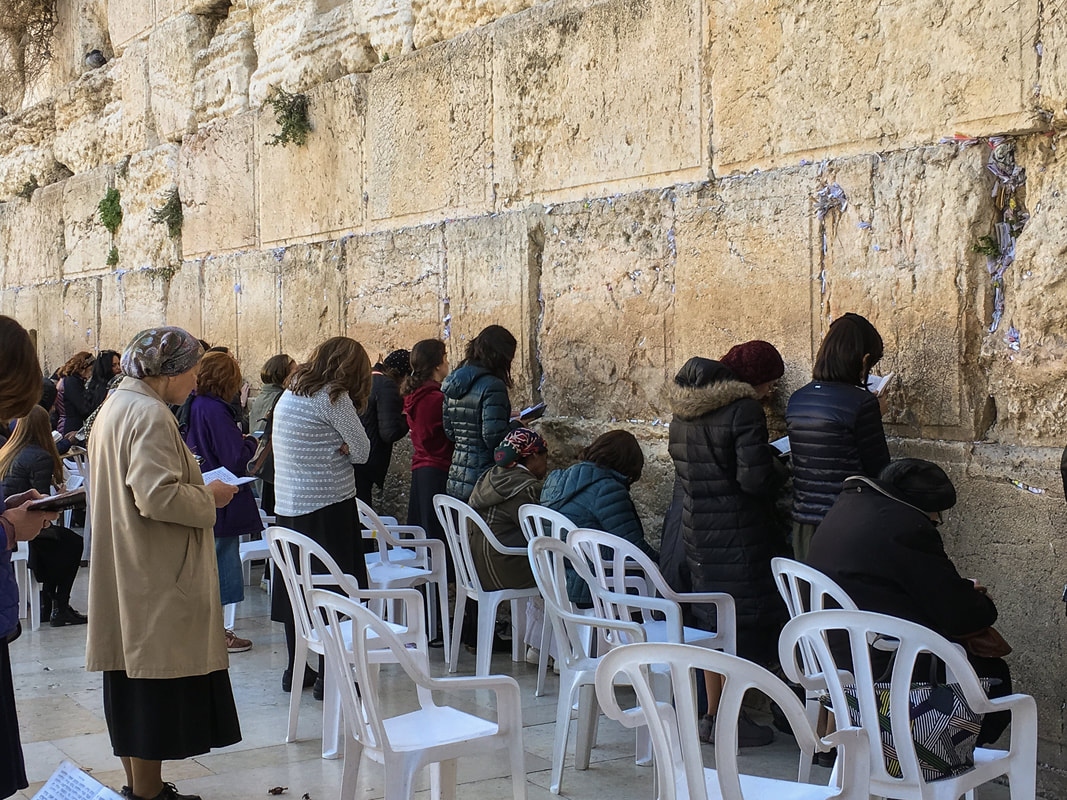









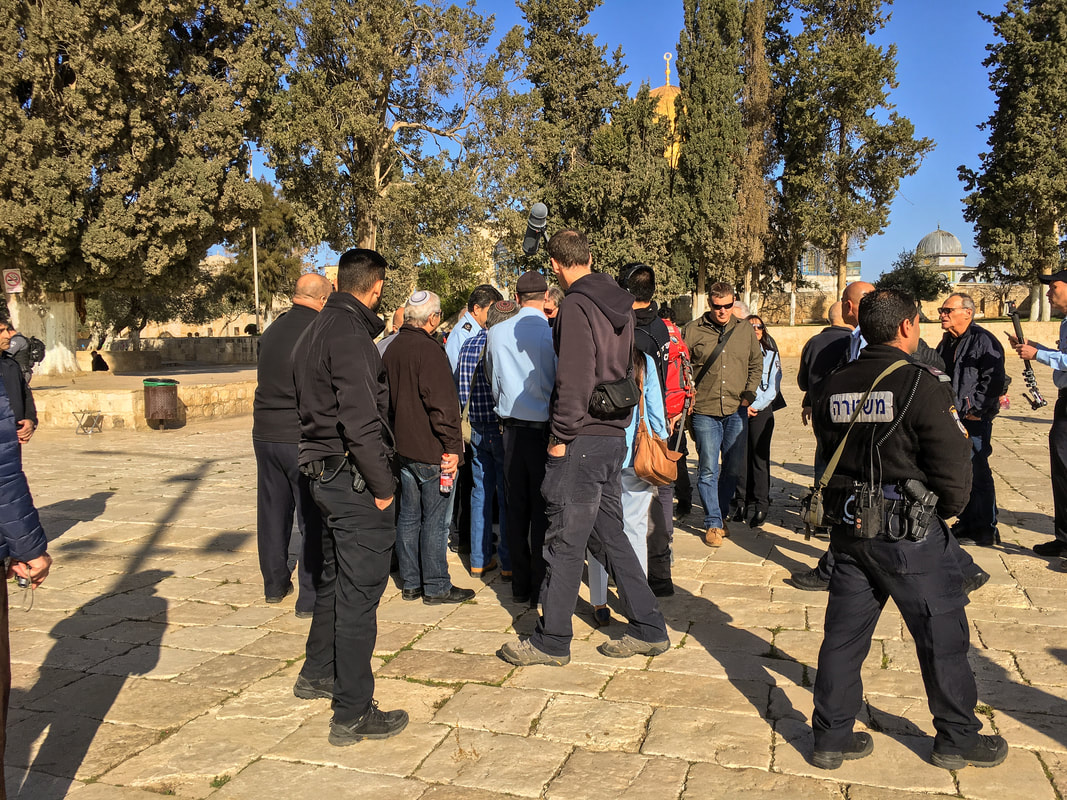



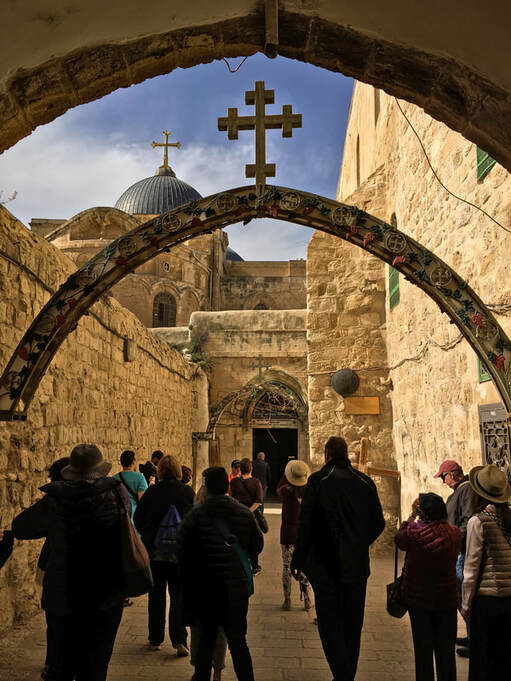
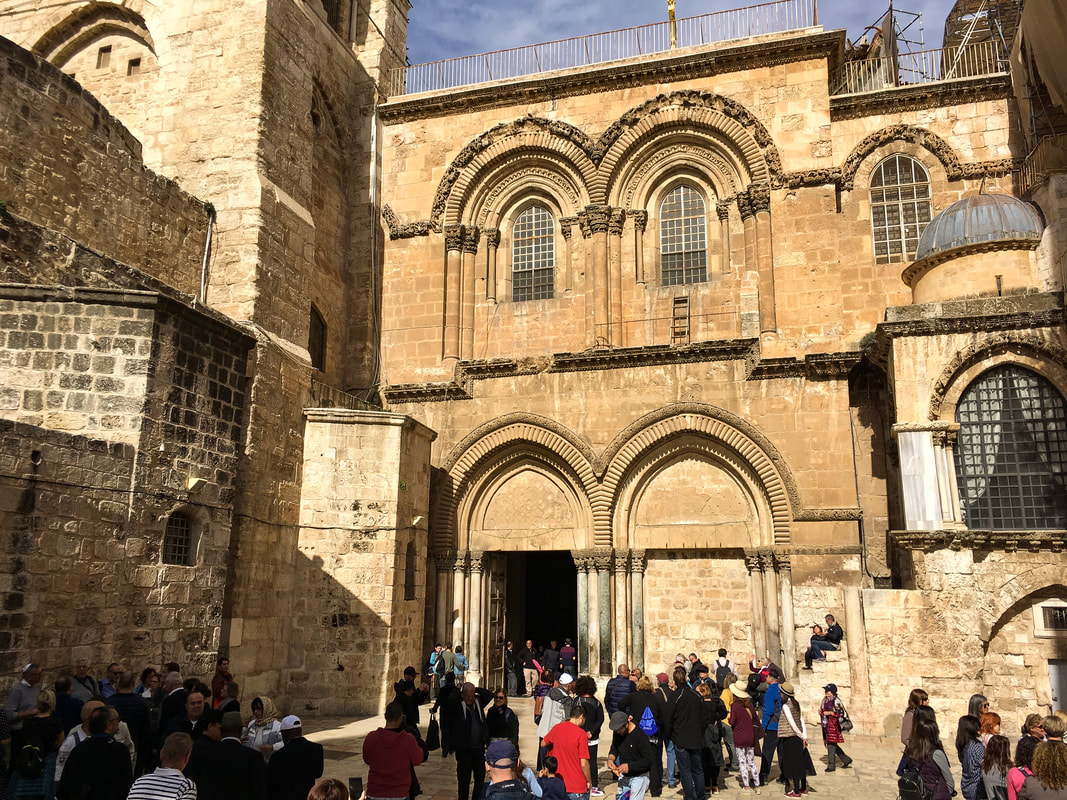


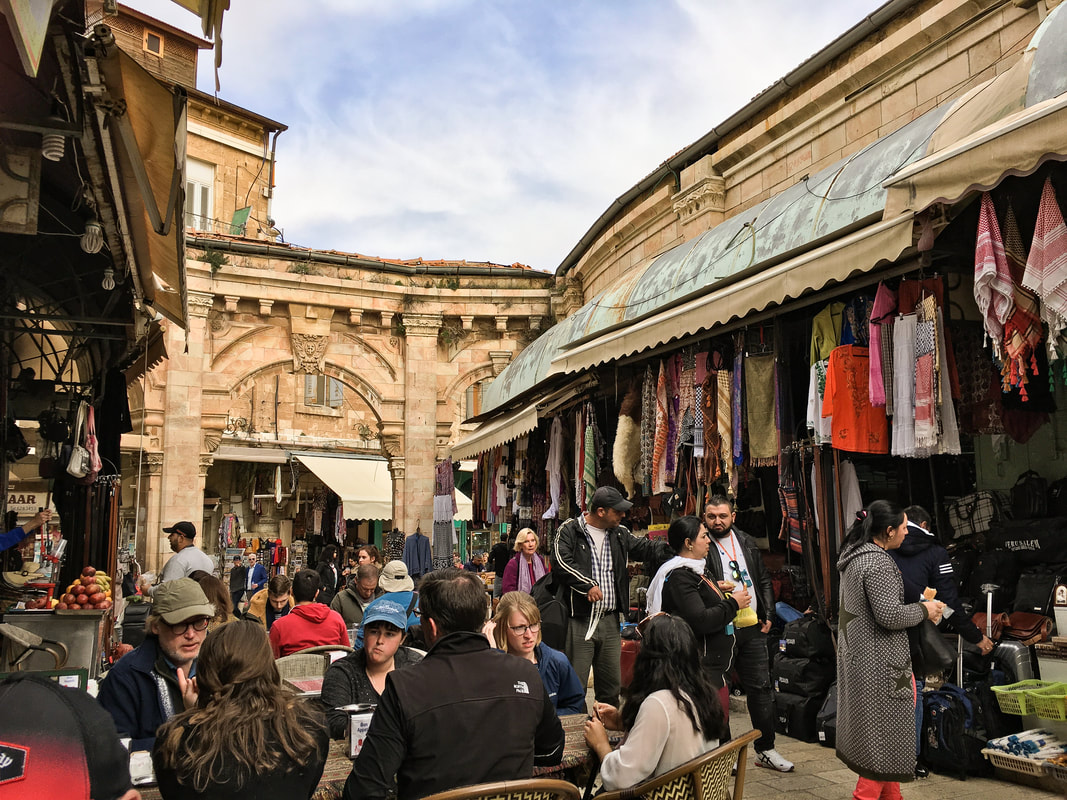
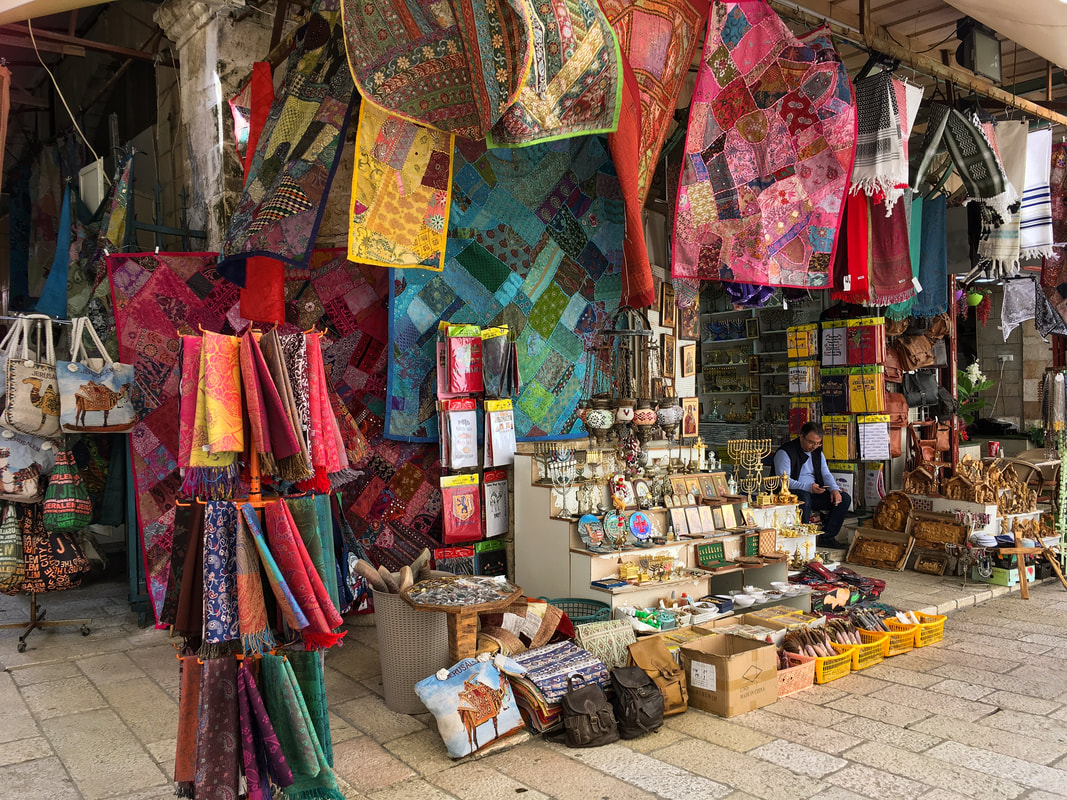









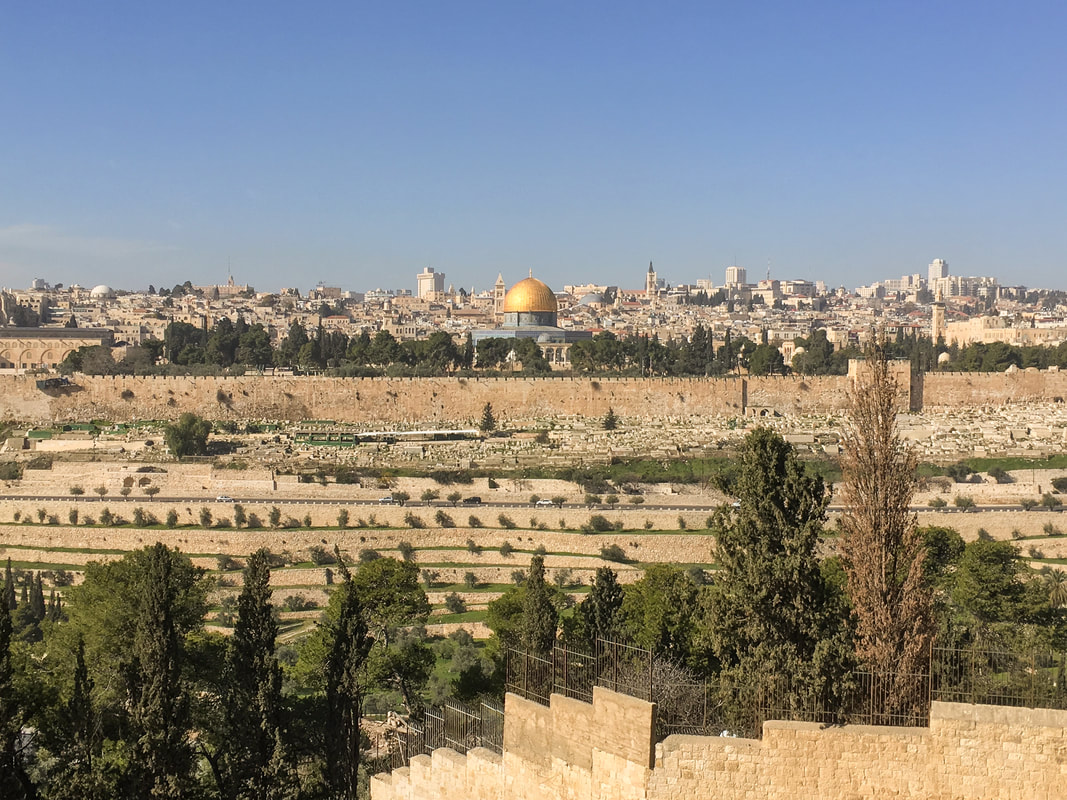







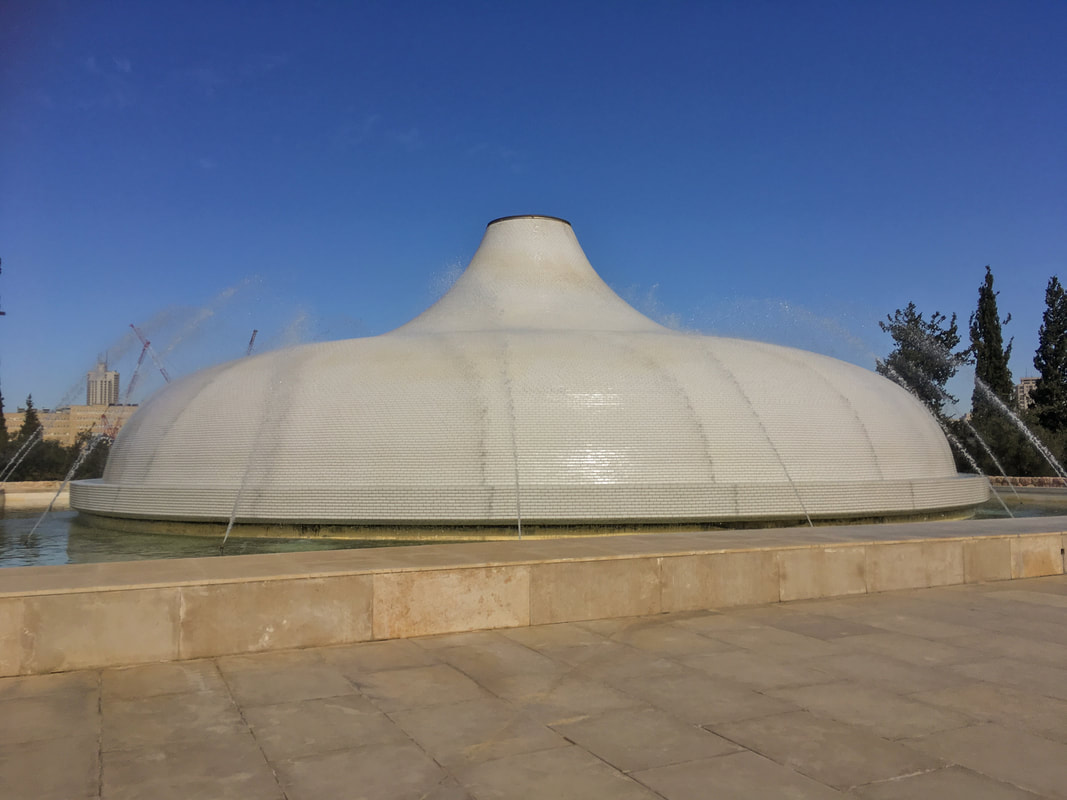








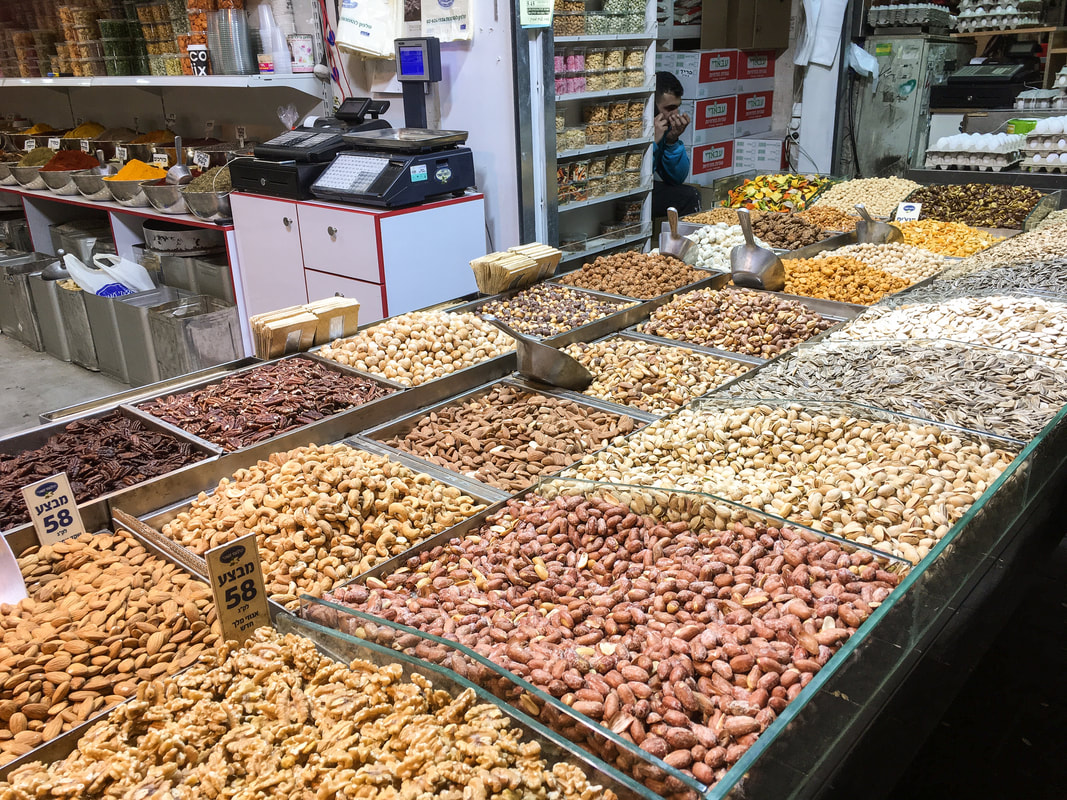







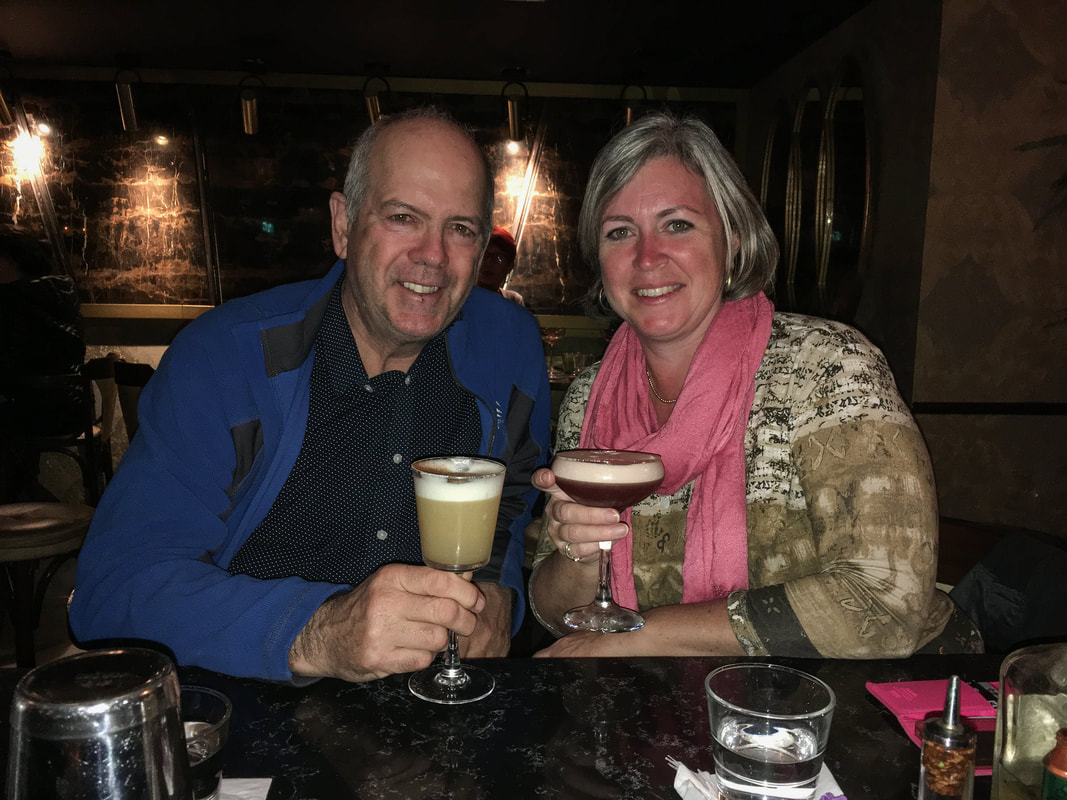


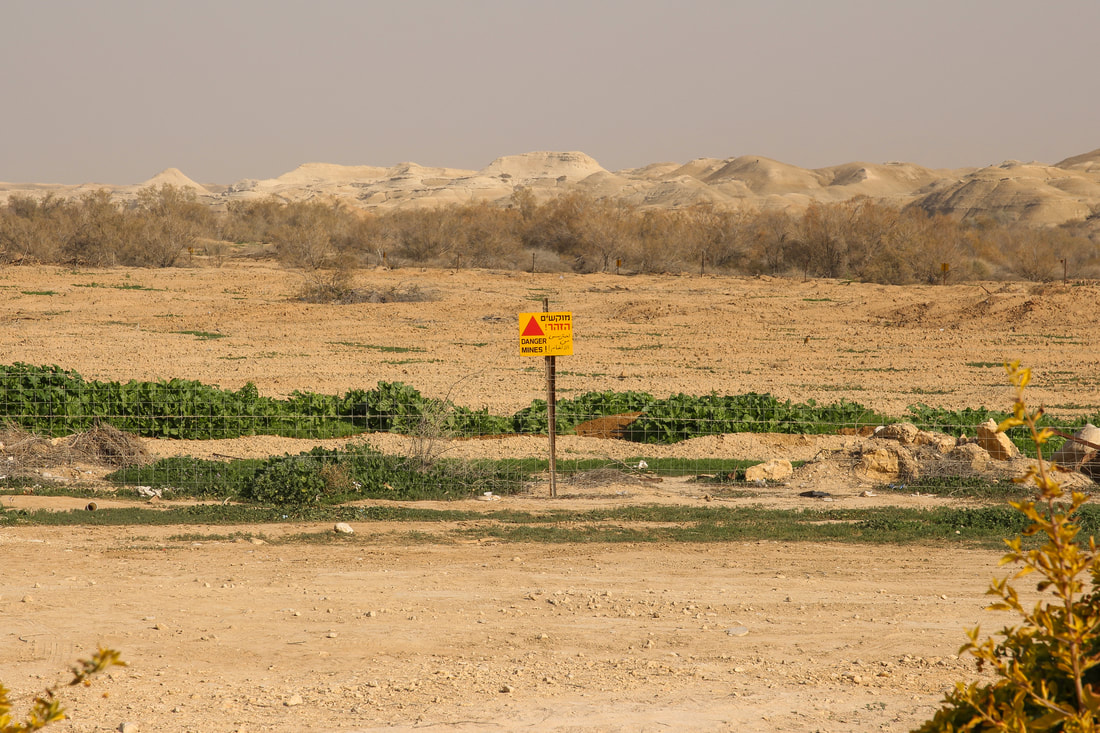


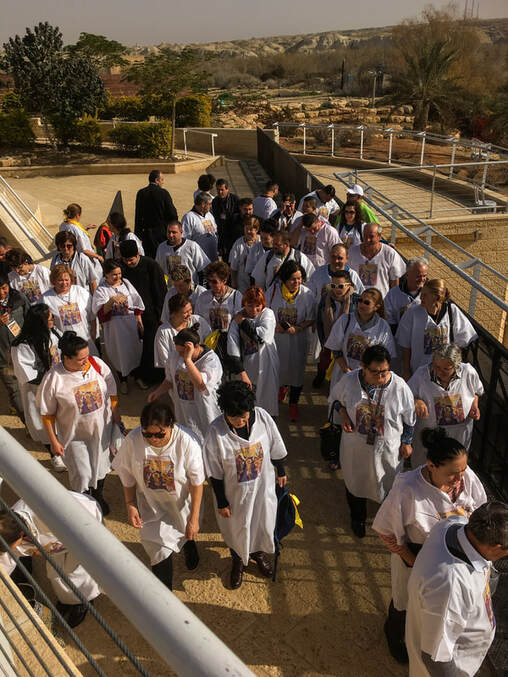

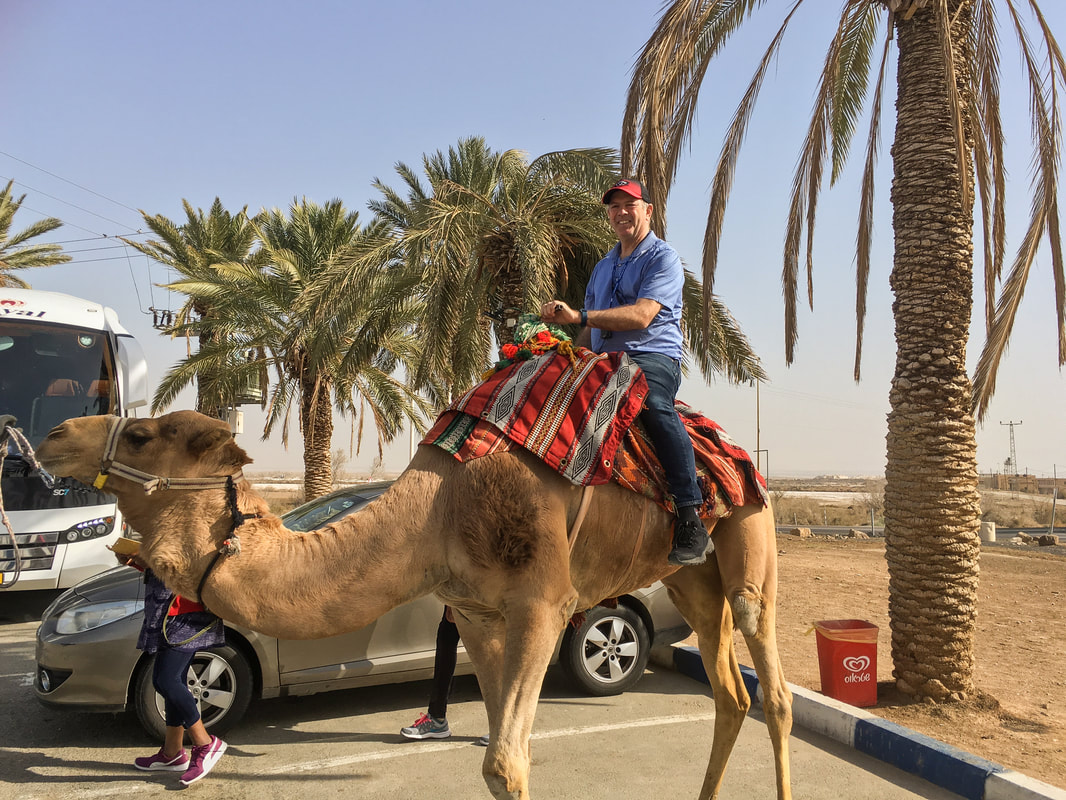












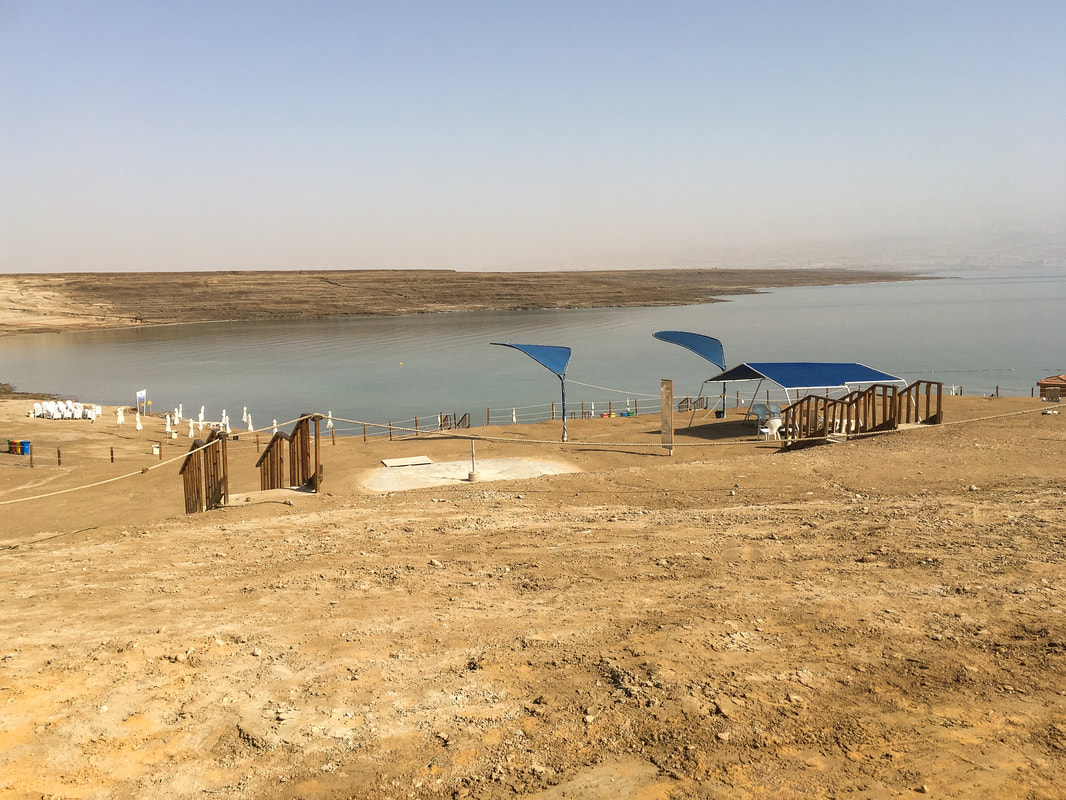



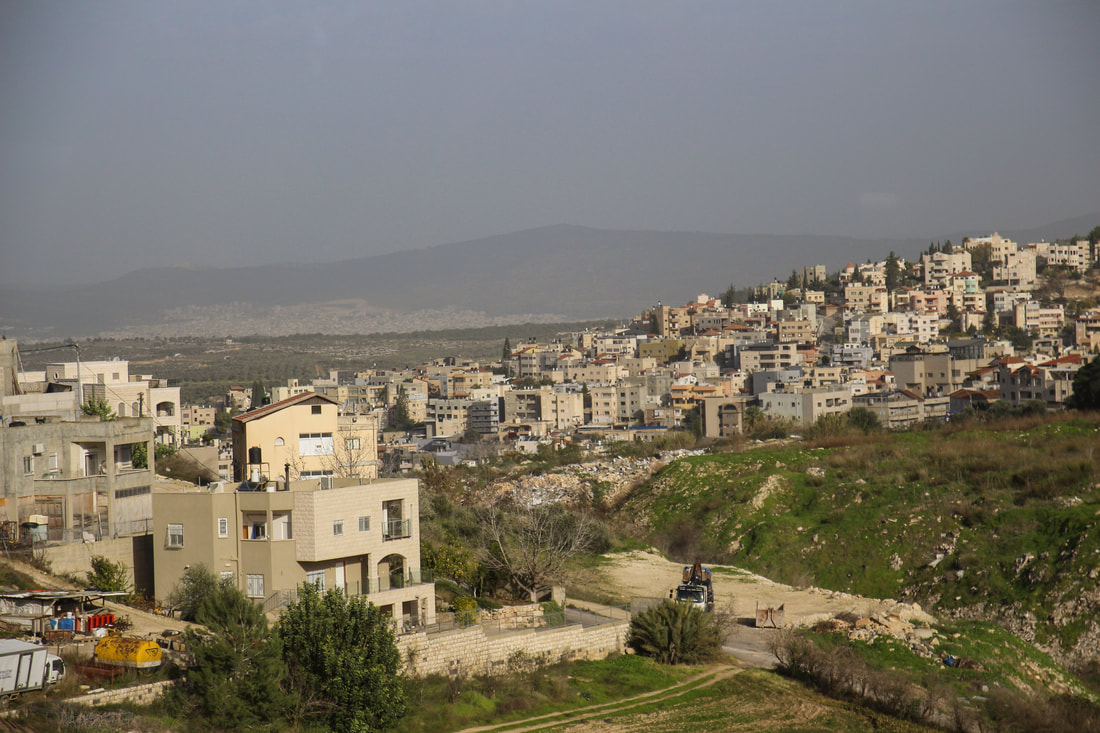


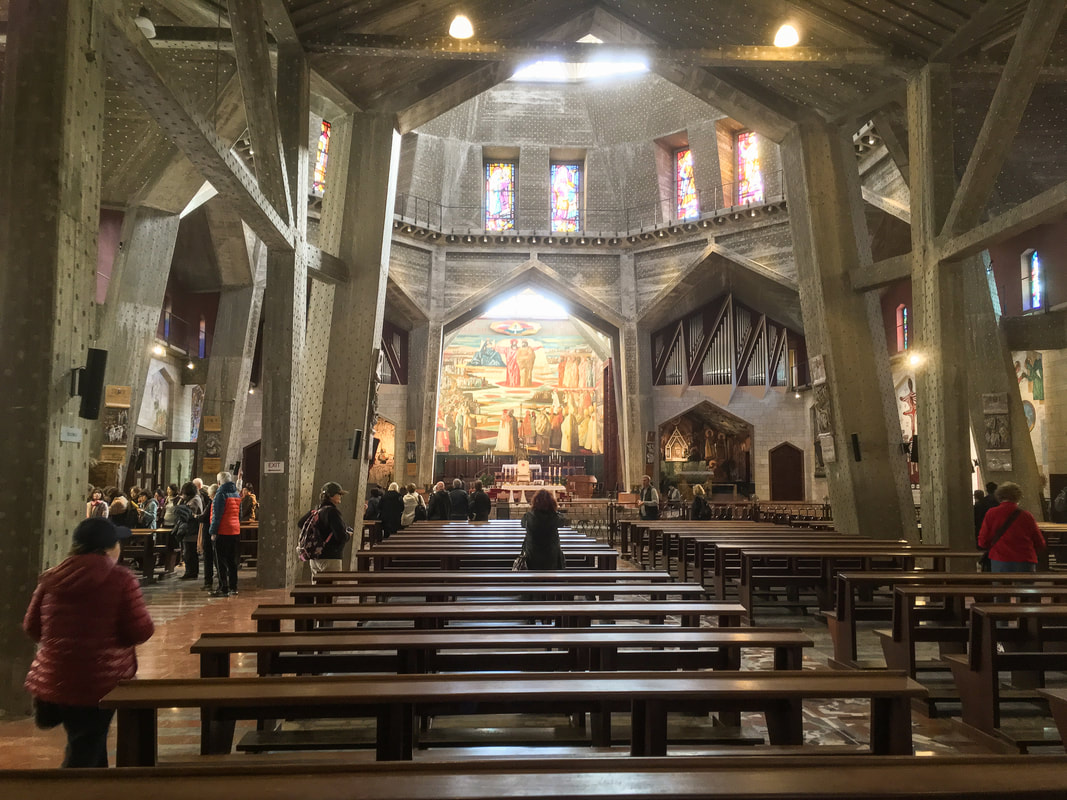










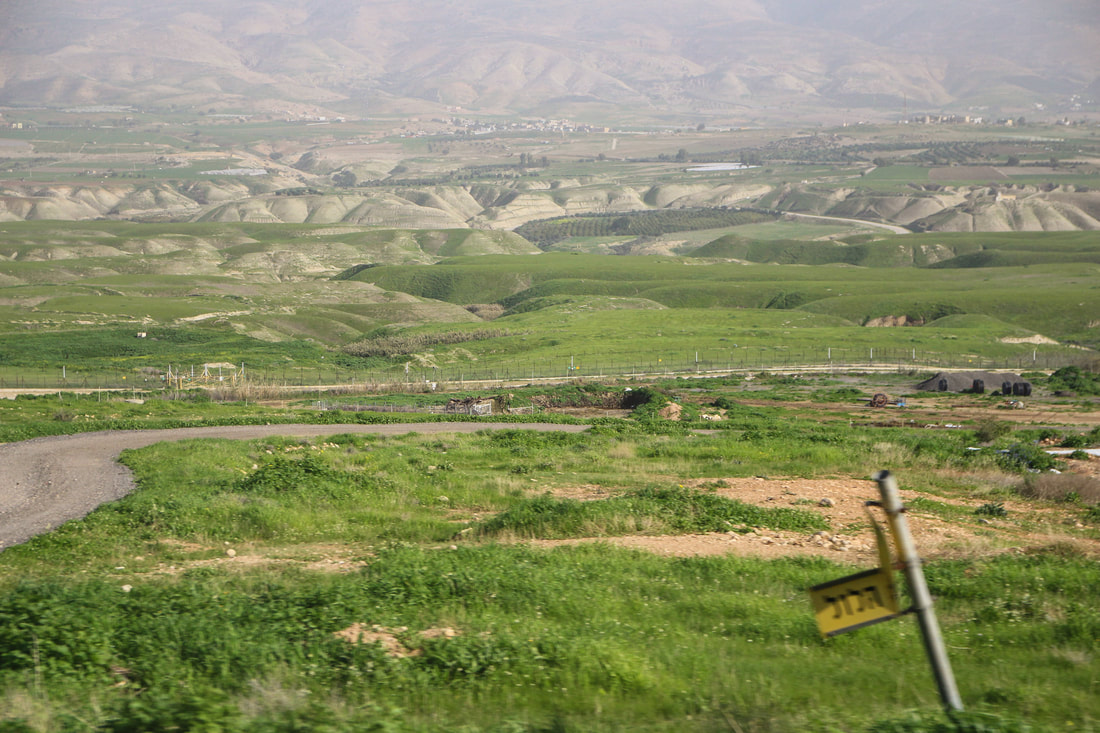

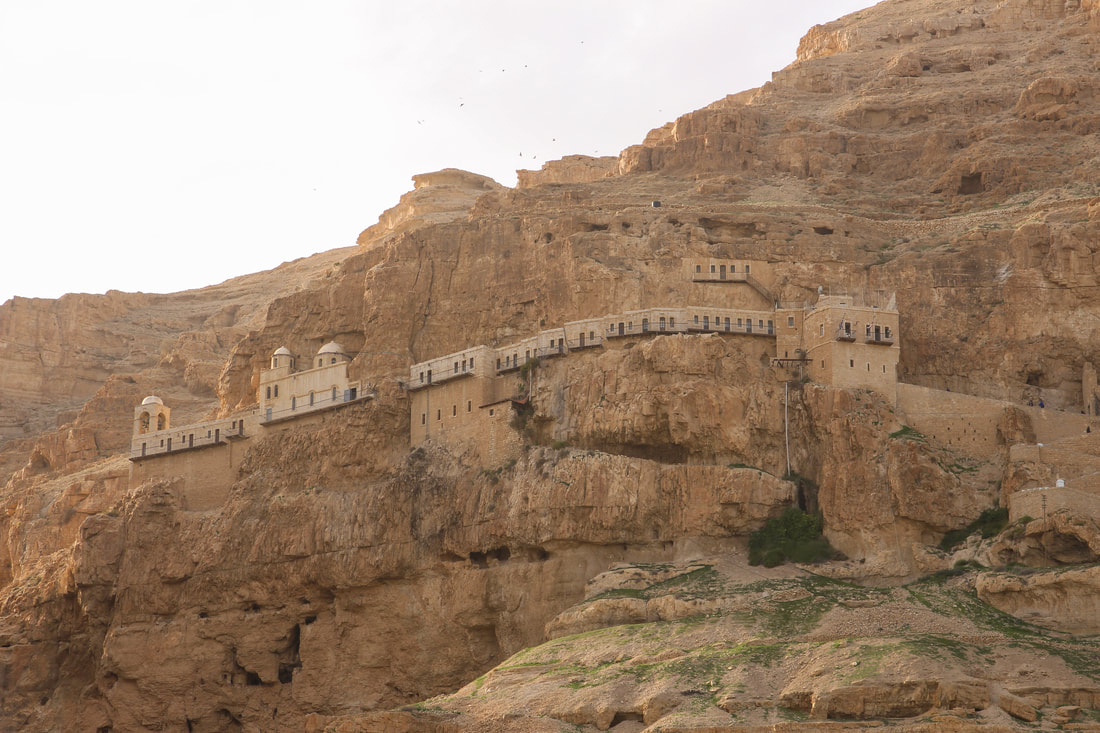






























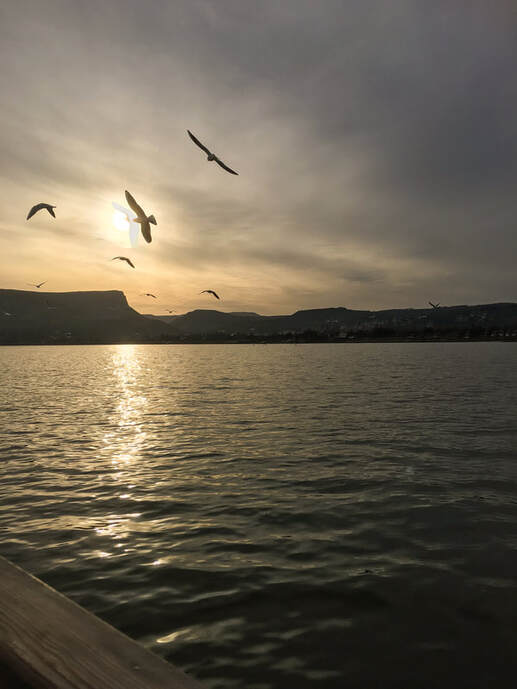







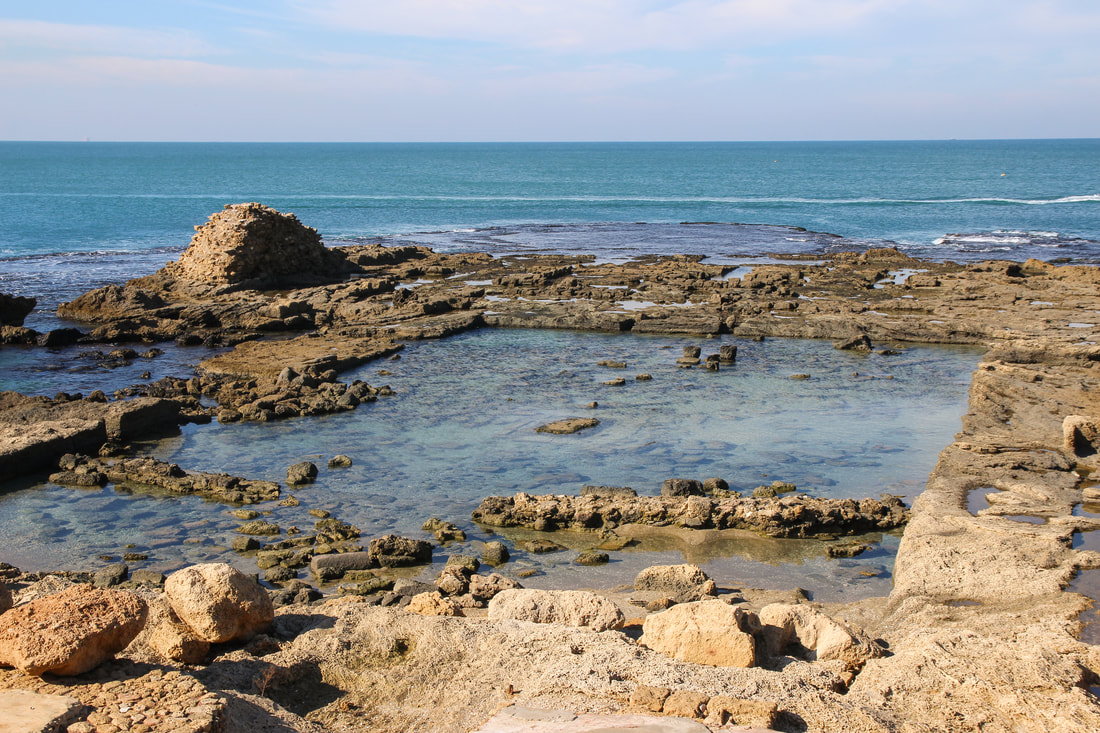
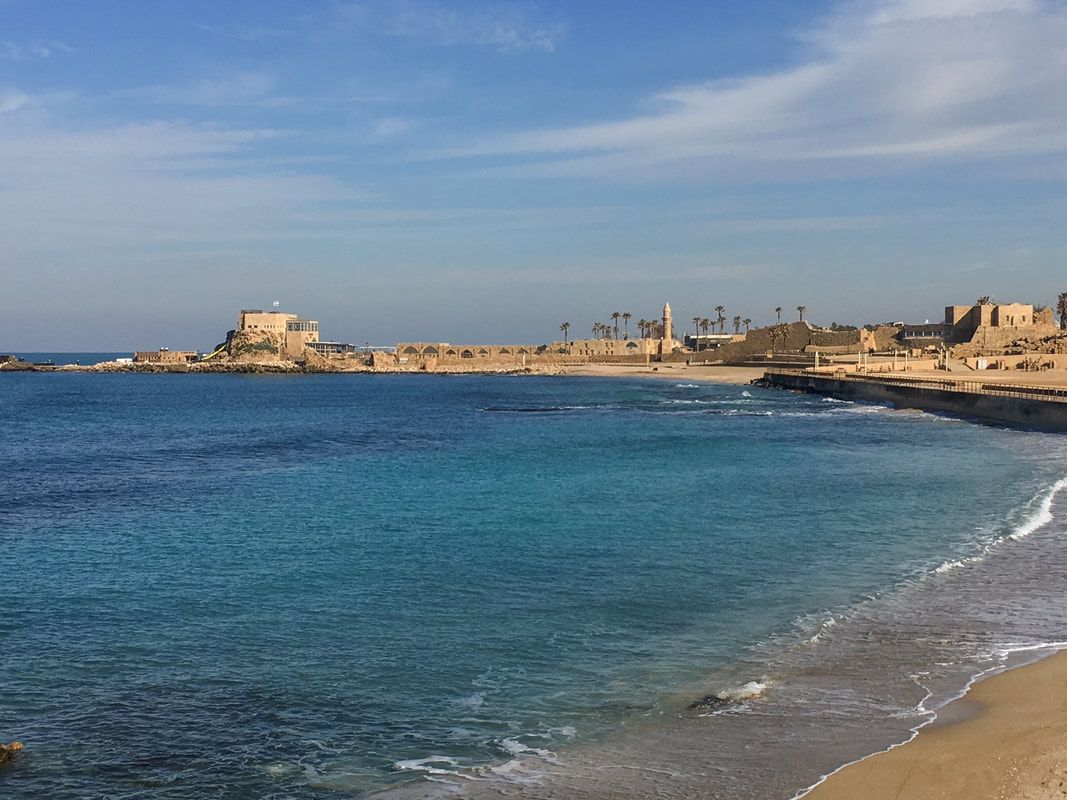


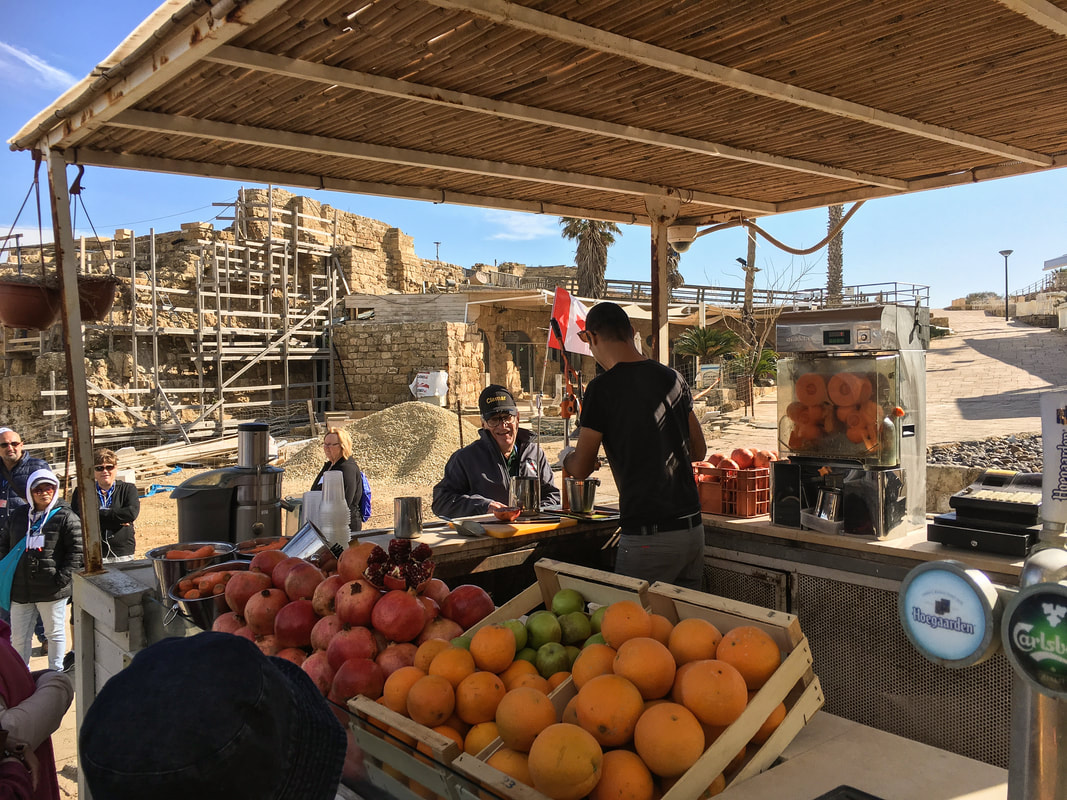





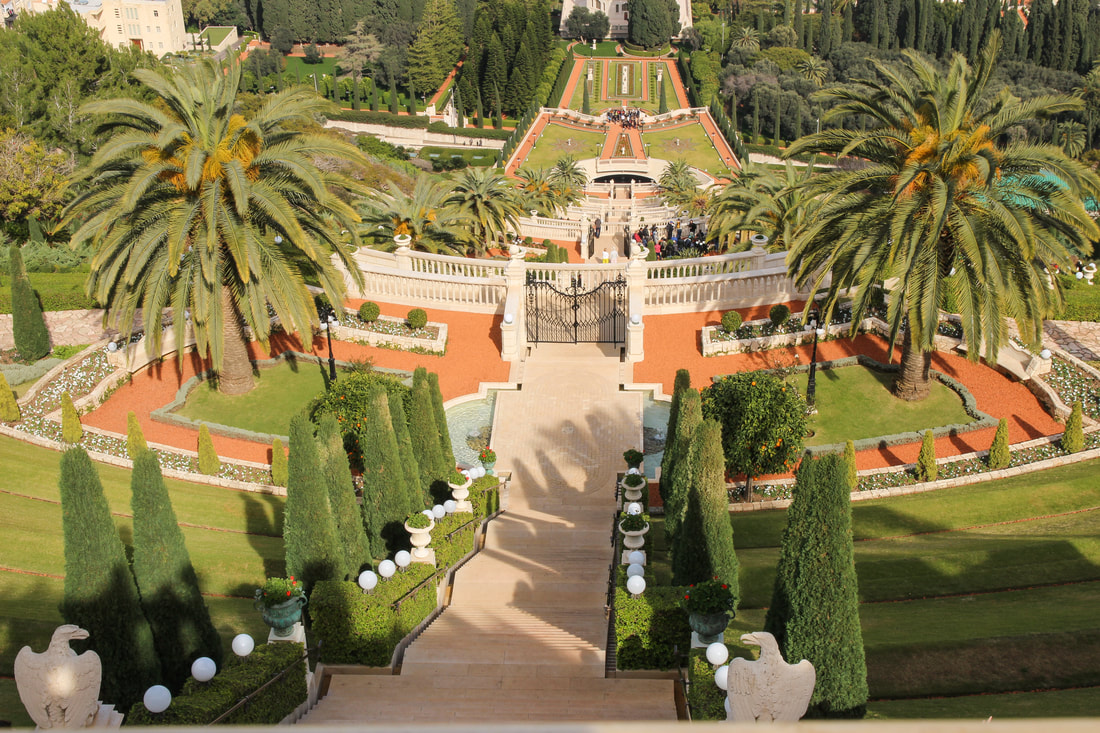


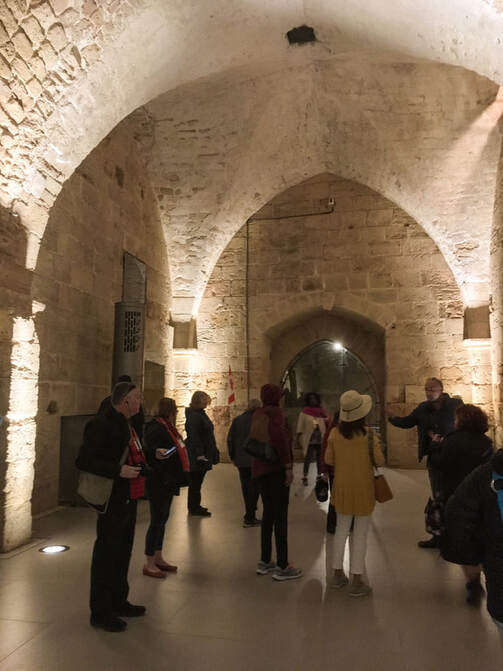


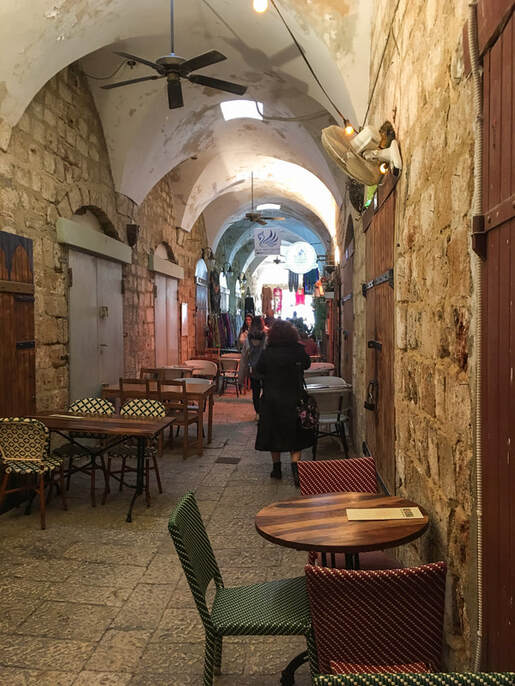



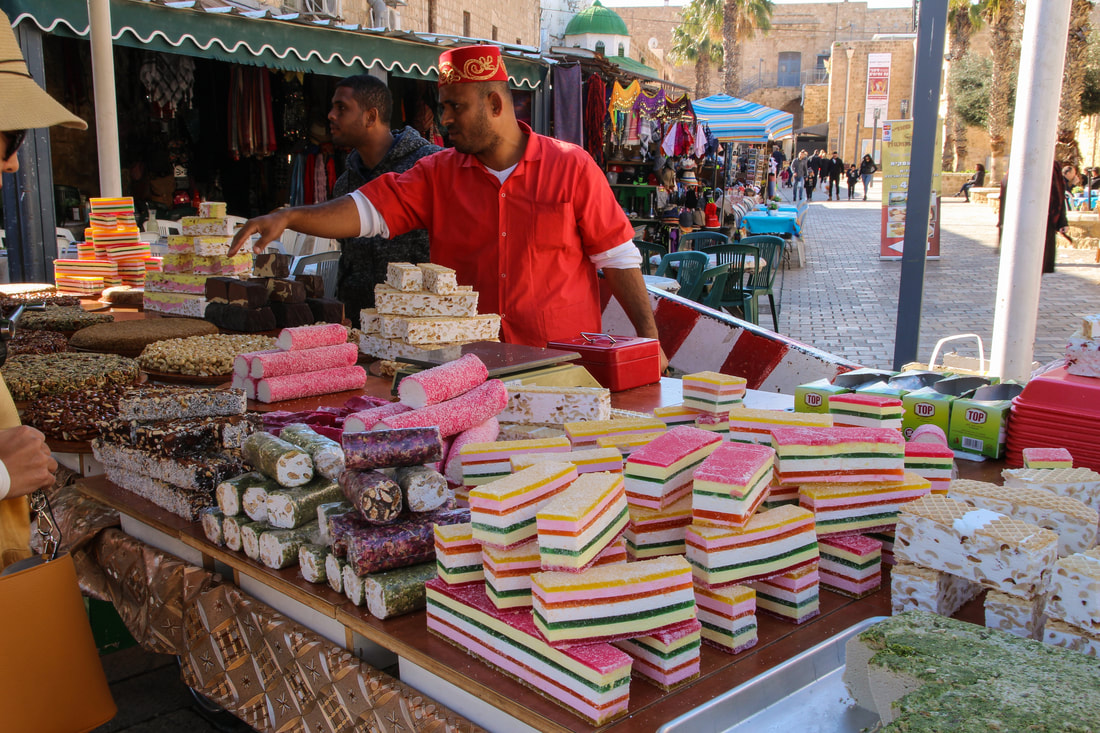



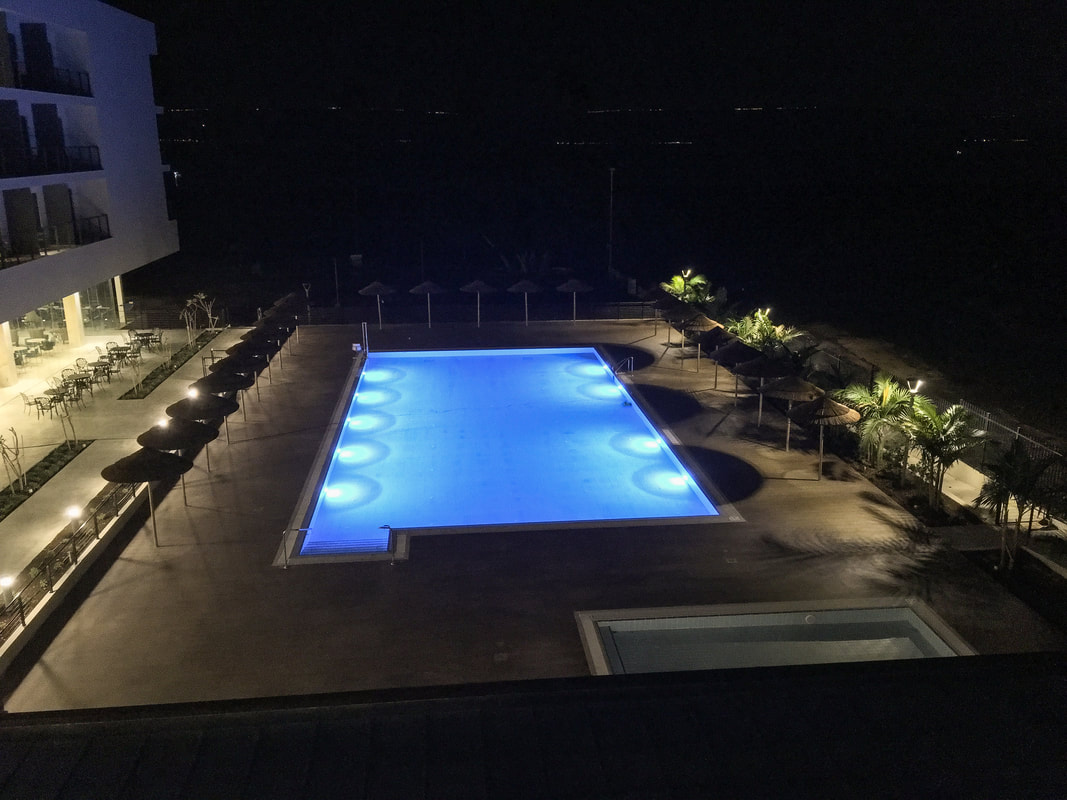








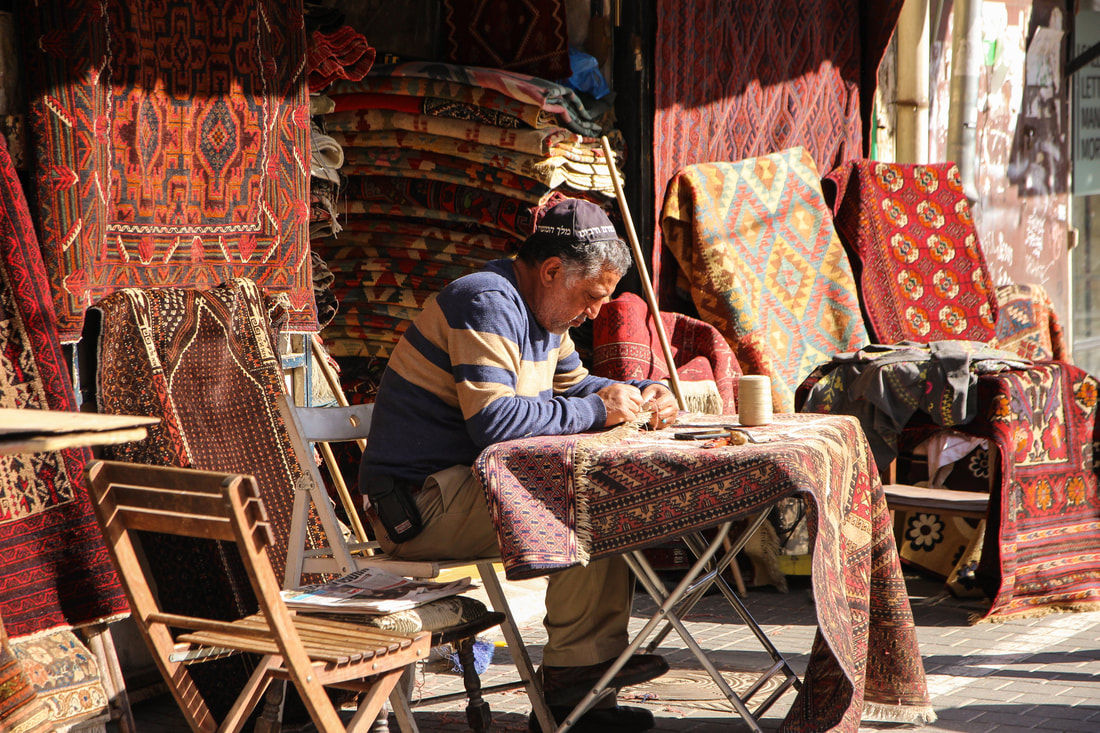

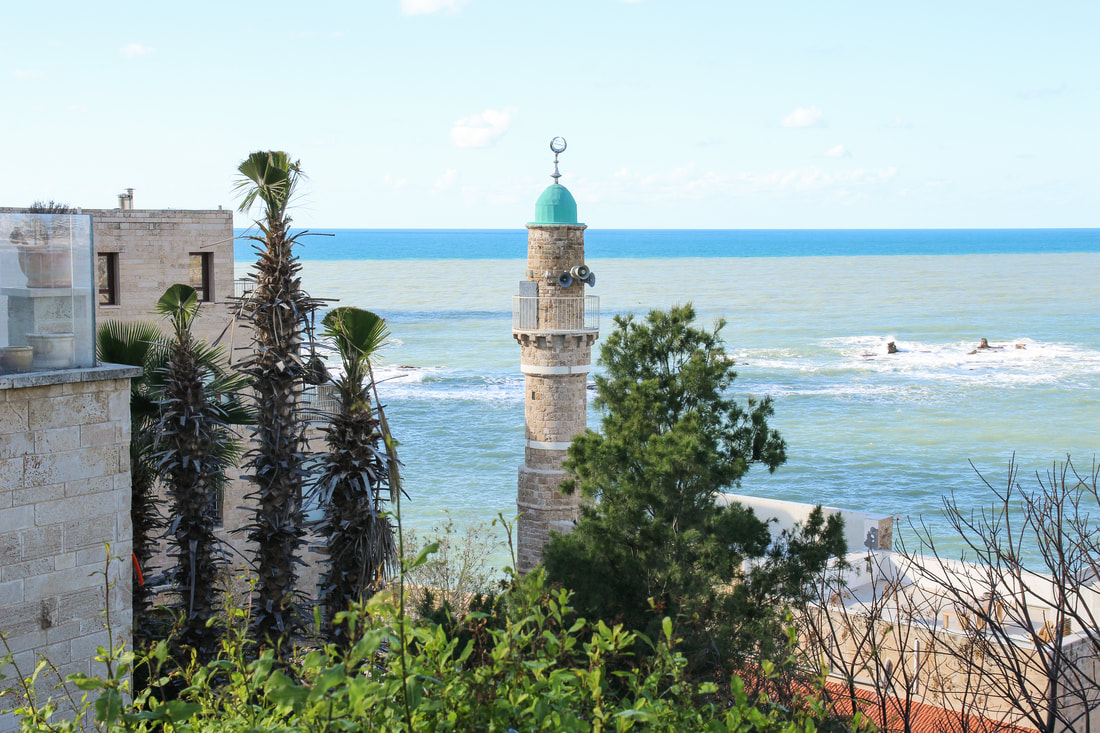
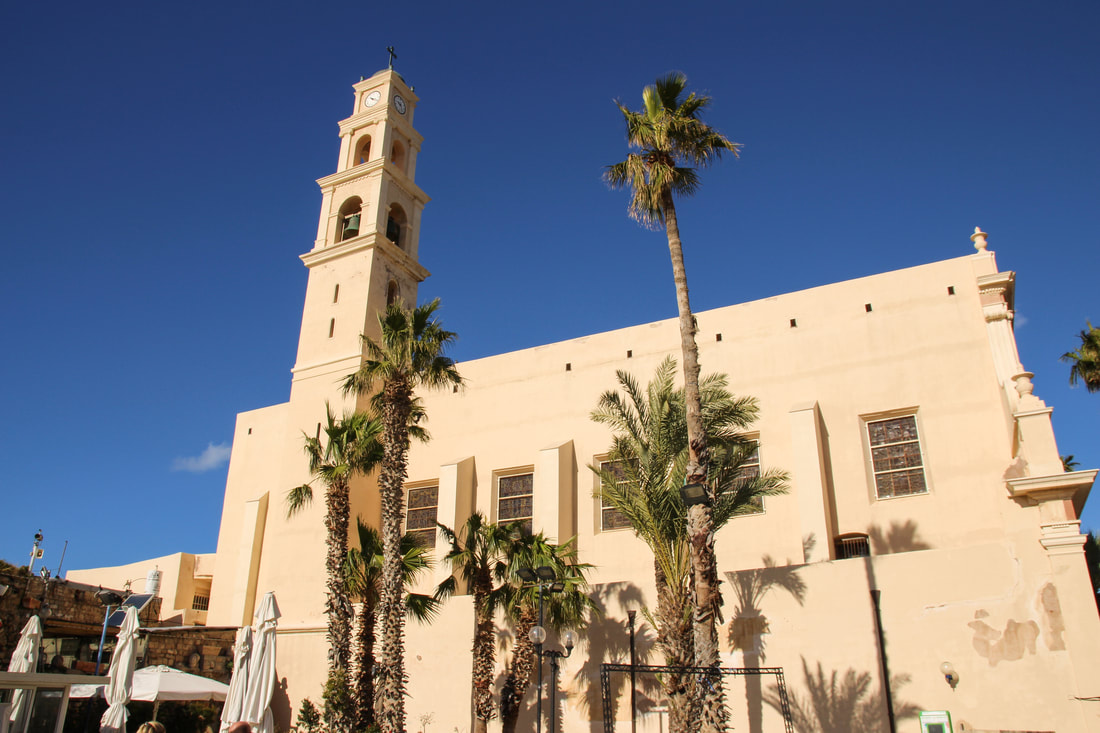








 RSS Feed
RSS Feed